Turbo Orca FXR..Ultimate FXR
All your life you've never seen
A woman taken by the wind
Would you stay if she promised you heaven?
Will you ever win?
Will you ever win?
Stevie Nicks
Fuck CVO Worship
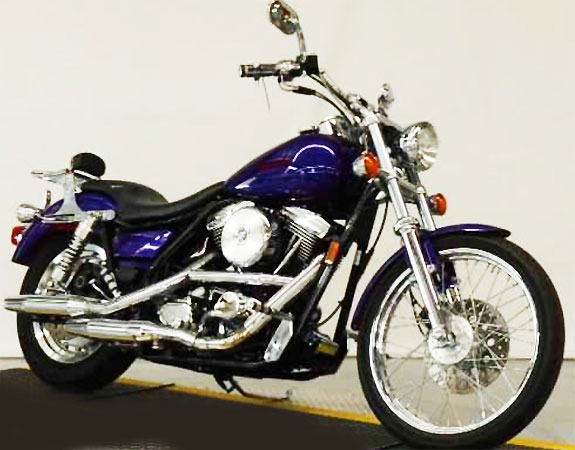
A stock 1999 CVO2...not ours...just a photo we
found...same paint, same bike though.
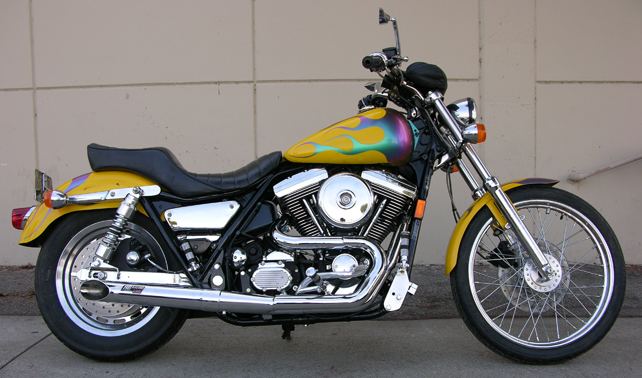
We sort of changed it around...LSR 2-1, RSR Fuel Injection, different paint....21" front 16"rear...
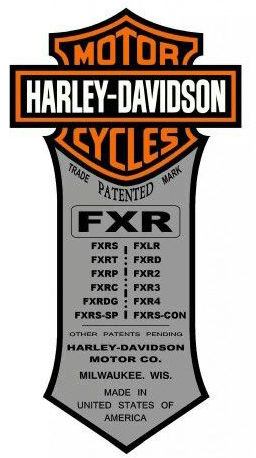
A number of years ago we picked up a 1999 CVO2
FXR and put on some old custom paint we had...You know keeping things
stock is illegal and we sure as hell don't worship this "CVO" business.
We put on a different seat and got rid of the shorter, stiff as hell,
shocks and some chrome side covers we bought from Elvis. We kept the bike's motor
stock and put on one of our 00-1010 B Style
Turn Out
exhausts and our RSR Closed Loop Fuel Injection.
Way before this we had a Shovelhead FXR
that Carl Pelletier of Competition Motorcycles had loaned us for
product development. We used it
for carburetor and exhaust testing for several years, like developing
the 41mm FCR carburetor
for Keihin Corporation. Then one day Carl called us up and asked if we
still had the FXR as he had a buyer for $10,000.00. We gave it back to
Carl.
We also had a 1987 FXR that we used for turbocharger, exhaust and camshaft development but we eventually pushed it into the corner and then sold it.
Funny story. We let a Yamaha XS1100 owner
ride our 1987 Turbo FXR and he came back saying he was surprised at how
well it handled, even when it was dragging things, but that "It seemed
to
flatten out around 9000 RPM"...flying over the Vincent St. Thomas
Bridge
in San Pedro. Ouch! ..It sounded a bit rough when he brought
it back..Pieces of piston rings were coming out the exhaust. The Branch
heads had bits of rings embedded in them.
We should have kept it but we needed the money. Enter the CVO2 pictured above.
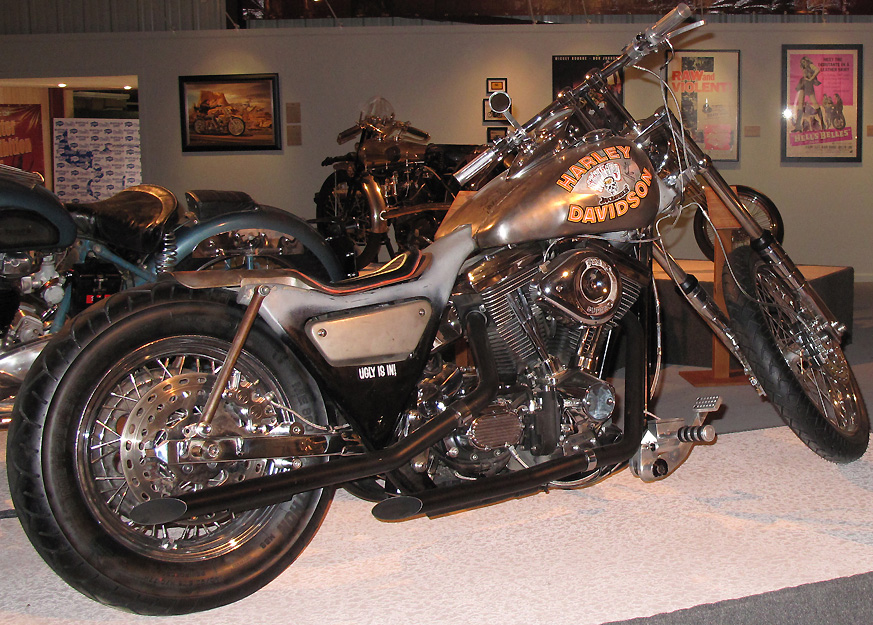
Another FXR we got involved with. Read about it here. Harley
Davidson and the Marlboro Man bike. FXR's
or Die as Elvis says.
The ultimate FXR for some...not for us.
FXR CVO2 Round Two
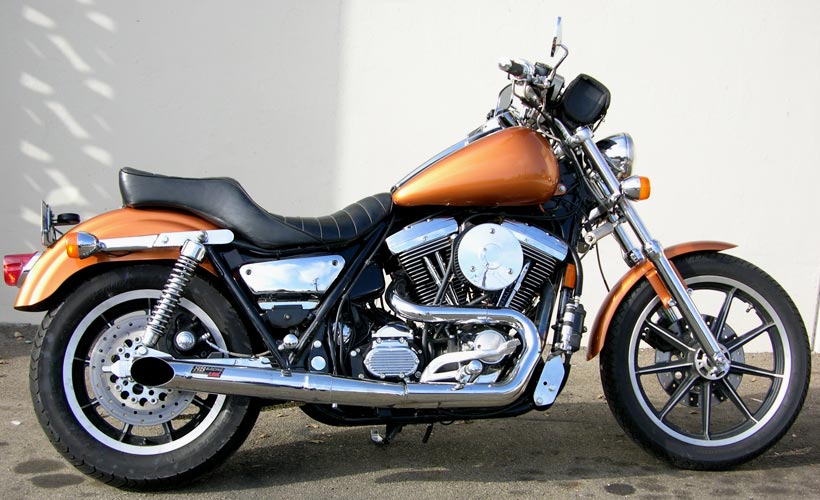
We got bored with the former CVO2 and its
3.5
gallon gas tank so we adapted an FLHX 5 gallon tank, painted the bike
and changed the wheels. We also converted it to chain drive and got
rid of the 21" front wheel that we never liked and adapted a 19" Dyna
front wheel. We got rid of the shorter rear CVO rear shocks and put
on 13.5" shocks for better ground clearance and a Dresser rear
wheel.
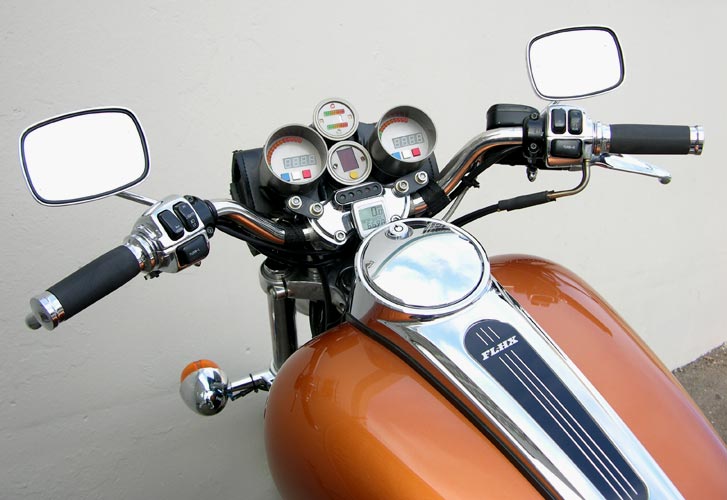
Result: It handled better, we could drive further without looking for a gas station and we got 56 MPG. We ended up putting in a 24 cell Lithium Battery as it held at 13.3 VDc even after siting for a month, and had less of a voltage drops in cranking, which gave it much better and quicker starting. EFi simply hates voltage drops...Anything below 11VDc and the fuel pump output declines drastically. We still left the engine stock...no cams.
We added our instrumentation consisting of
our digital Orca Bonneville Tach, GPS Speedometer , Digital Gear
Indicator and
our Dual RSR Air Fuel Ratio Gauge. The 5 gallon tank gave us a 200 mile
range under closed loop efi. We left the tank and fenders with a
painter and he came up with the copper/bronze color.
Everyone drove the bike. It was sort of
quick, mainly because it was about 300 lbs lighter than a Dresser and
it had instantaneous throttle response with our 56mm RSR EFi. Then we
got locked into Bonneville, advanced Cosworth electronics and the
Bullett. There was no time to work on the FXR. Racing eats all your
time and
money.
Bonneille...FXR Turbo Development
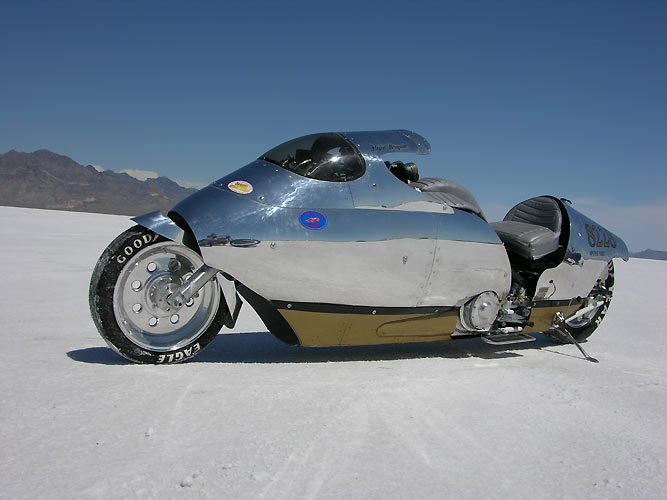
Well, we spent a lot of time and money
setting records at Bonneville and since the late 1980's and we have
constantly been
developing
Intercooled ORCA Turbo Motors and fuel injection technology. We set
records on BMW's, Kawasakis, Suzukis and Harley's...at El Mirage,
Muroc, Maxton, and Pro Gas Drag Racing Champioships...pretty much on
our nickel. Ouch!
Over 400
HP on long course at Bonneville.
Once you ride the Bullett you don't want a stock 80" FXR anymore. The
Bullett occupied all of our time and money and any development on
the FXR ground to a halt. FXR, the Stepsister. We left the Bullett in
2017 after spending many tens of thousands of dollars and getting a
soft 200 mph record (poor conditions) that held for 5 years. Untold
3000 mile round trips.
Time to work on our own projects. As we were told by a famous tuner..."There is no end to free".
Men in Black....

When you spend more
than 40 years...
Holy Shit where did the time go!... working on and designing high
performance motorcycles and equipment, spending untold thousands of
hours, and more late nights and lost weekends than you can imagine, a
lot
of people get dragged into the Vortex.
A large cast of characters, both good and bad, from many continents, have at one time or another hitched a ride on the RB Racing Express...and then faded away. Once the party starts they show up and once the party is over they head for the door. Something about not living with the consequences, or just being practical, whatever that is. As the song says "Players only love you when they're playing"
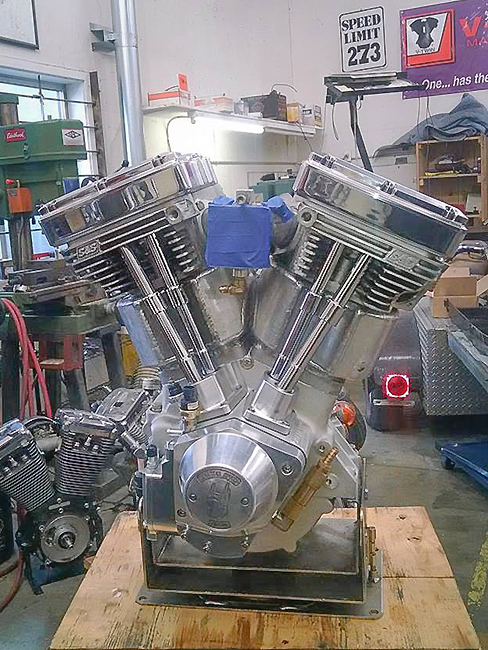
The Bullett has
been a test bed for ORCA Engine technology and it's complexity is way,
way, beyond
things we have done before. 139 cubic inch "EVO", water cooled, 60mm fly by wire throttle body, water injected and intercooled.
It forced us to confront engineering
issues and learn new disciplines. 1000 lbs, no higher than your waist,
45 degrees of rake and over 400 hp with a 560 HP Turbo... Advanced
Cosworth electronics, phase anti-phase boost control and traction
control. One hell of a lot on RB Racing's plate as no one else understood or wanted to understand the technical issues.
Only designed for Bonneville, it is the ultimate pushrod motorcycle and is a handful to ride until it settles down around 100 mph. Geared for 300 mph @6500 rpm it is not something you putt around on...but once you've driven it, you want that kind of power and sophistication that you can hop on anytime...like a lightweight flickable FXR.
We got a soft 200 mph record under poor
salt conditions then ended our Bullett development and participation in 2017
on our terms.
Why not take the Bullett's ORCA Engine and control technology and put it into an FXR...Screw the stock 80" CVO2. We are upping the complexity and control we learned at Bonneville and applying this to our FXR. Something we can ride every day...and not have to deal with people that do not believe in either learning or testing complex systems.
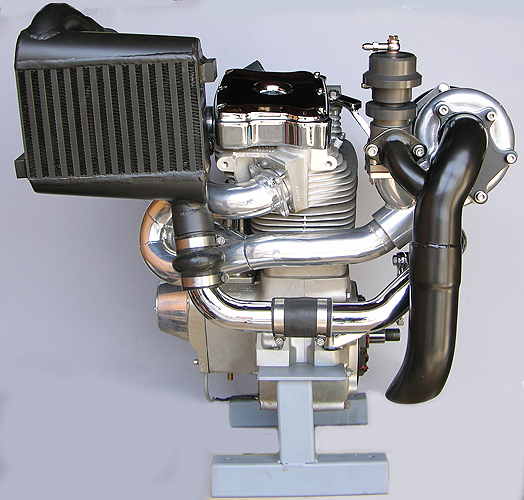
Take a 113" S&S SA B1 motor we had
previously developed and use it... Or a new variation on the same and
adapt it to our much modifed CVO2 FXR.
Lots of decsions to make...Like go radical
, or be somewhat practical, or prep it to race, or simply do all of the
above. It's all ground zero. Write yourself a check and get going.
Development is a bitch.
Round Three...Come Up with a Plan
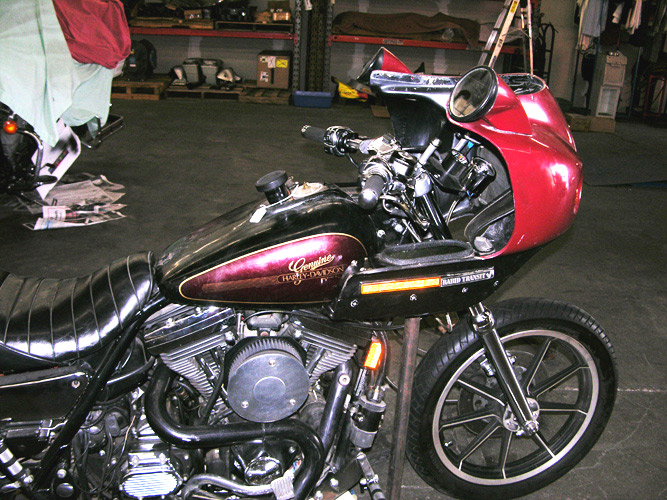
Since we've been around for awhile and have a long memory for things we are interested in, and since we had spent a lot of time at Camber Fairing in 1977 with Jerry Greer working on our 1977 Bol D'Or Monoshock racers, we knew Jerry had been involved with Don Vesco and his Rabid Transit fairings that were marketed for a few years to the BMW and Jap crowd. We tracked one down and adapted it to our FXR before we stripped it down.
Why? Simply because around 180 mph, and
faster, the wind gets a bit fierce and you need a frame
mounted fairing that is wide enough to get your shoulders
behind...The Rabid Transit fairing is a hand-laid, sturdy piece because
Jerry knew
his craft. A very sophisticated aero design that gives good
protection...Way better than an FXRT fairing. Get down on the
tank and look over the fairing's edge.

We fabbed up these mounts and had them powder coated. They bolt to the steering head and frame.
FXR Turbo Cockpit...
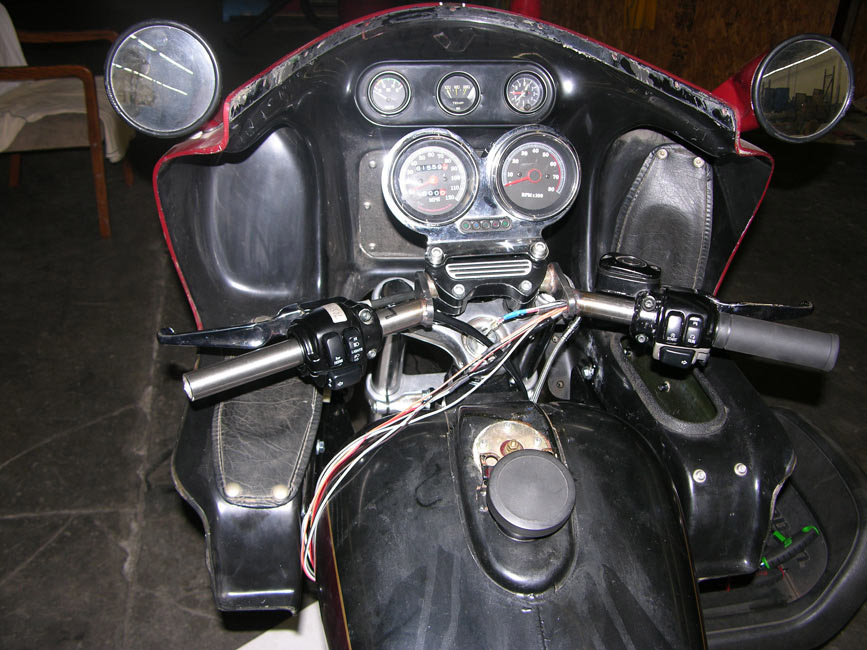
We welded up a
set of stainless handlebars prepared for our 60mm Bosch Turbo Fly By Wire
Throttle Body. No available bars will fit... they have to be made. Your
hands are
out of the air stream and the bars go full lock staying inside the
fairing. No ape hangers. No forward controls. Lock to lock inside the fairing.
Bye bye to our previous FLHX 5 gallon tank...She was too wide for the Rabid Transit fairing. We only have 1/2"clearance side to side with the smaller tank. We'll get the lost gas capacity back another way.
Clutch Cable Through the Bars
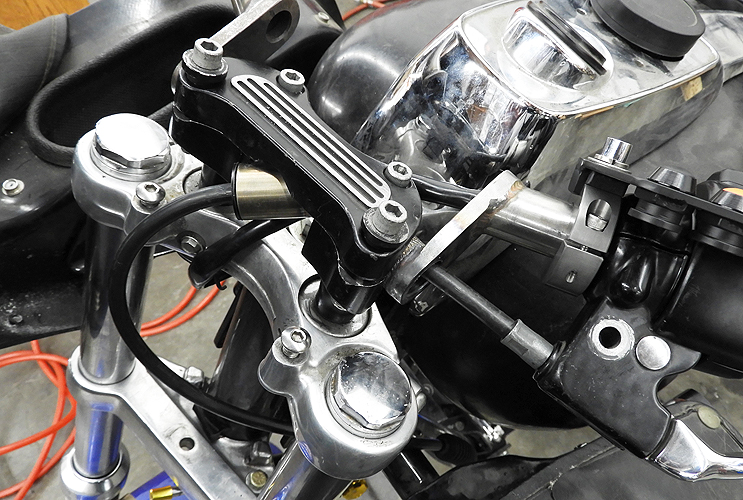
Once you start this you have to make all
sorts of adaptations. In this case, the low bars are designed to keep
your hands out of an 185mph airstream and inside the fairing even at
full lock.
This necessitated running the clutch cable
through the bars and welding on a stainless steel exit tube with an
internal Delrin liner.
FXR Narrow Glide Forks
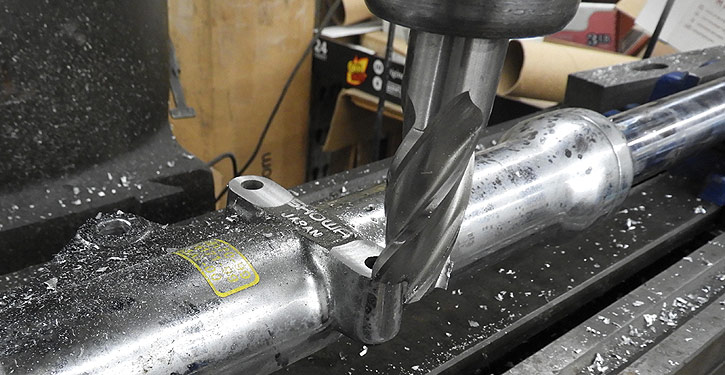
Modification for the wider 17" rim, front tire, and custom fender we will be using.
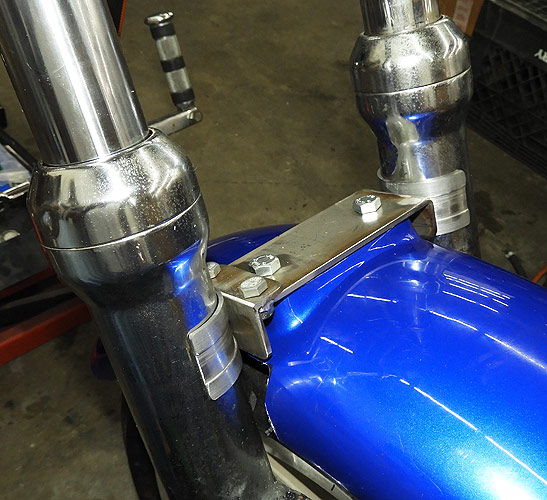

Narrowglide forks are definitely not made
for the wider 110/70ZR-17 Michelin Pilot front tire. 120 series tires
are too wide. We machined off the inner oem fender mount to make room
for the 110 series tire on the 3.5" Buell rim.... Tire has a wider footprint than the 21" original tire.
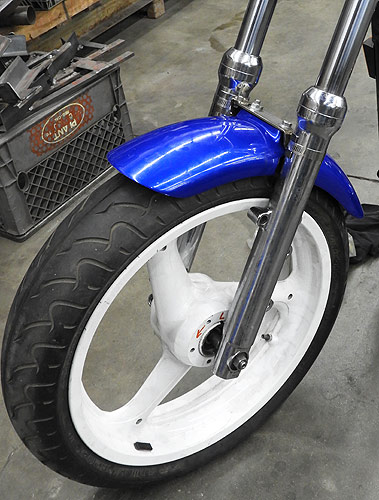
We then fabricated a temporary two piece clamp-on fender support. We will be installing a machined fork brace. Final finished position above. Very solid.
The chromed FXR2 single disc forks have a 3/4 axle. A separate 60 tooth
wheel sensor is added to get front wheel speed for speedometer / odometer as
well as traction control functions.
FXR Turbo Oil Bag Transmission

The smaller gas tank just was not going to
get us the range we needed even at 50 mpg fuel-injected. Our solution
was to ditch the FXR Transmission and Oil Bag and put in a 1998 Bagger
transmission with integral oil bag/pan. In place of the FXR's oil bag
we are building a stainless steel secondary gas tank with an external
fuel pump, regulator, and filter..
No, we are not going to cut the 1998 Evo Bagger Oil Pan to clear the under motor braces. Having welded on castings a lot in the past you get into porosity issues and we do not want to lose any oil capacity.
No, we are not going to use a Twin Cam engine.
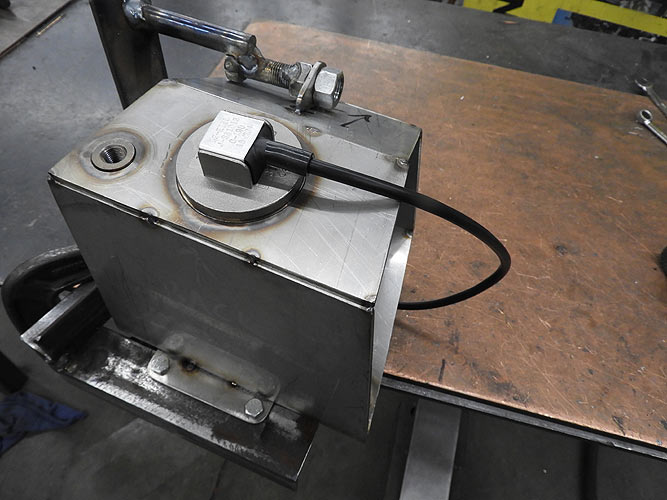

Secondary, under the seat, Gas Tank: Fuel
feed, bypass, vent to main tank, float level sending unit, and a
secondary fuel tank gauge in the fairing.
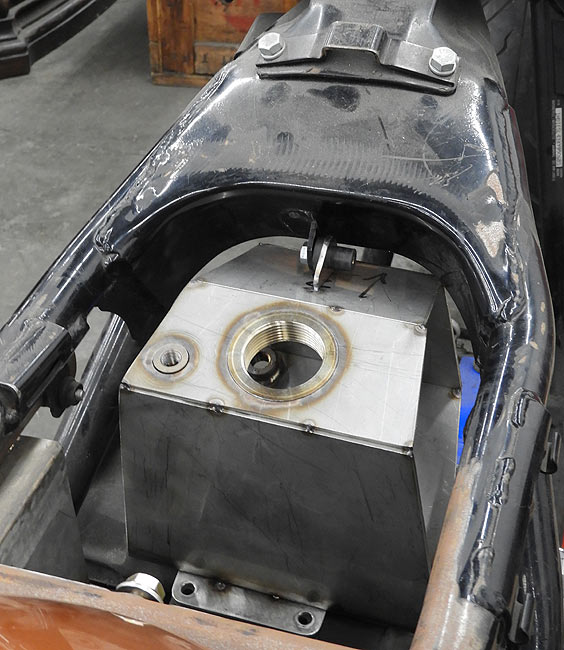
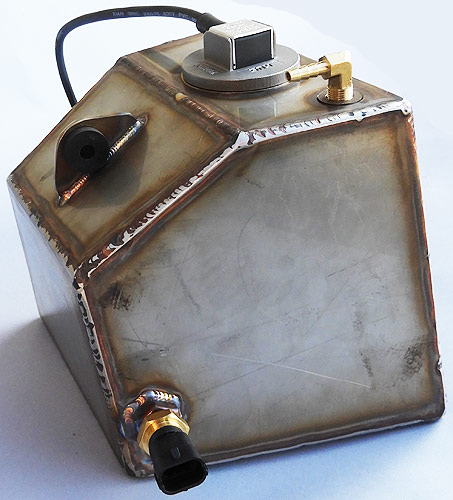
A Bosch temperature sensor
monitors the fuel return or bypass temperature. We are using a fuel cooler to drop the fuel
temperatures as the main gas tank sits above the hot motor.
In addition, the secondary fuel tank acts like a surge reservoir keeping fuel and not gulps of air fed to the pump... Unlike an in-tank Harley pump in a gas tank shape that was never meant for efi in-tank feed with fuel sloshing around.
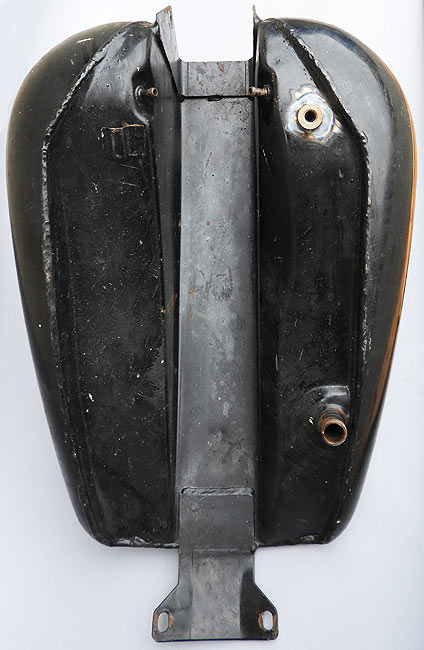
We welded in a stainless return vent port
that runs from the top of the secondary tank to the main tank. A
stainless tube extends to the top of the main tank to vent air from the
secondary tank.
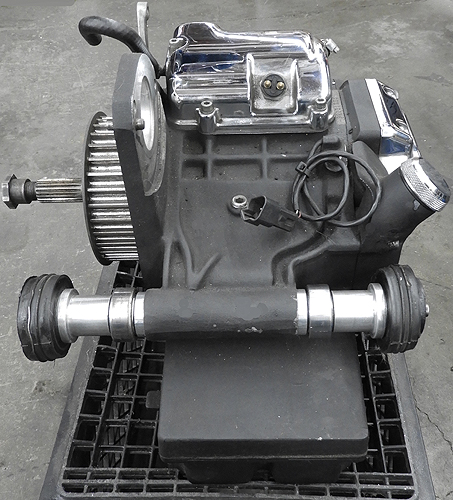
.625 Transmission shaft with adaptors for Twin Cam Dresser Swingarm spherical bearings.
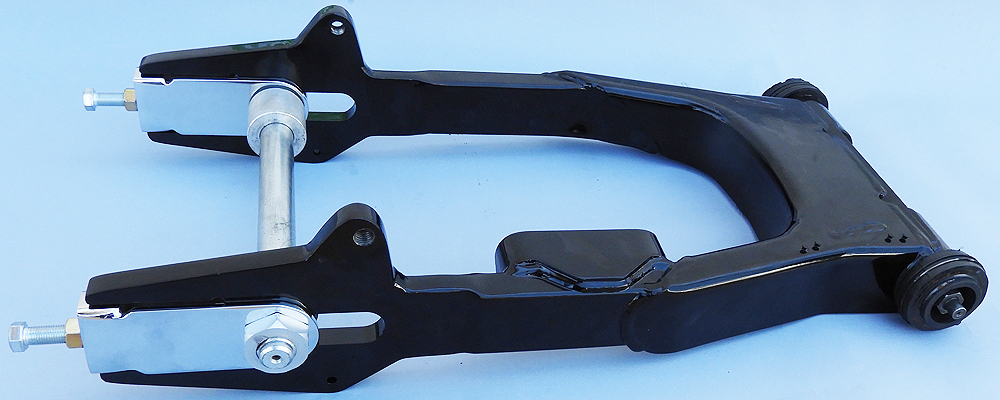
We are using a 2008 Touring Swingarm that we have modified for 2" chain adjustment. We use the CVO2's 5/8" pivot shaft with our $895.00 swingarm that uses the 2008 Spherical Bearings. There are no more Delkron FXR cases for 3/4" pivot shafts. Don't try to drill the bagger transmission for the 3/4" shaft.
Pictured above is our FXR Turbo Orca swingarm with 1" higher shock mounts. It has 2" of adjustment for the chain drive and uses a 25mm late model axle for a 17" Sportster rear wheel. The 2008 Swingarm has been modified to use our 5/8" 1999 FXR CVO2 transmission pivot shaft. A late model 4 piston CVO Dresser caliper provides the rear stopping power.
We are using a 1998 Dresser Oilbag 5 speed
transmission with Jims Fat5 gears.
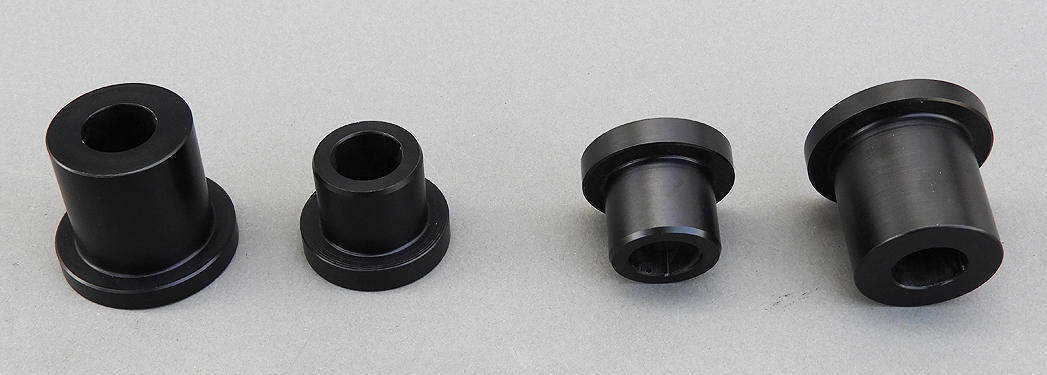
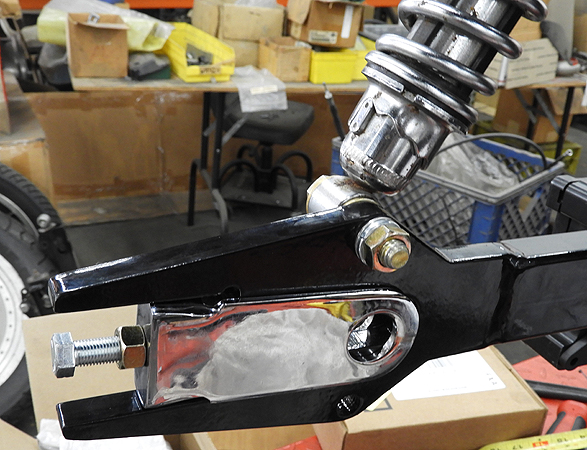

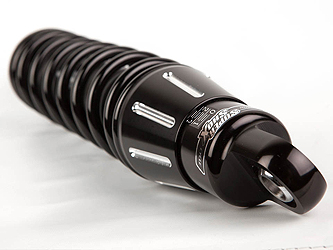
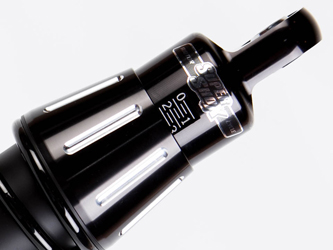
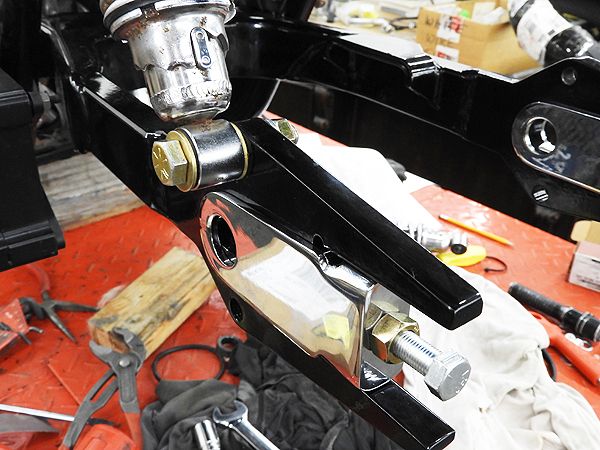
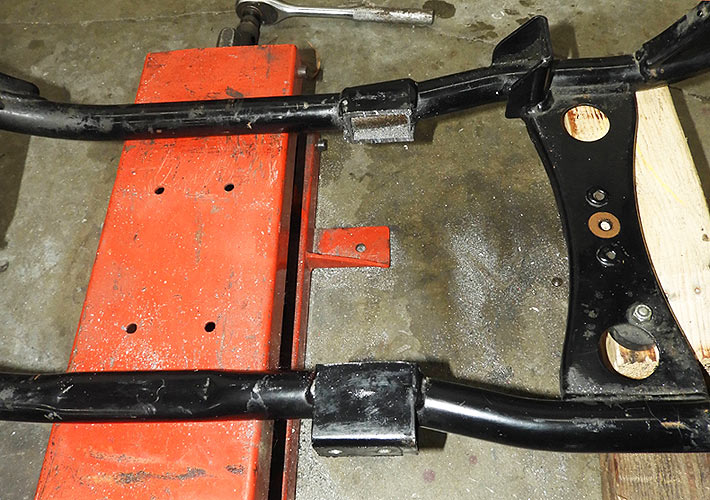
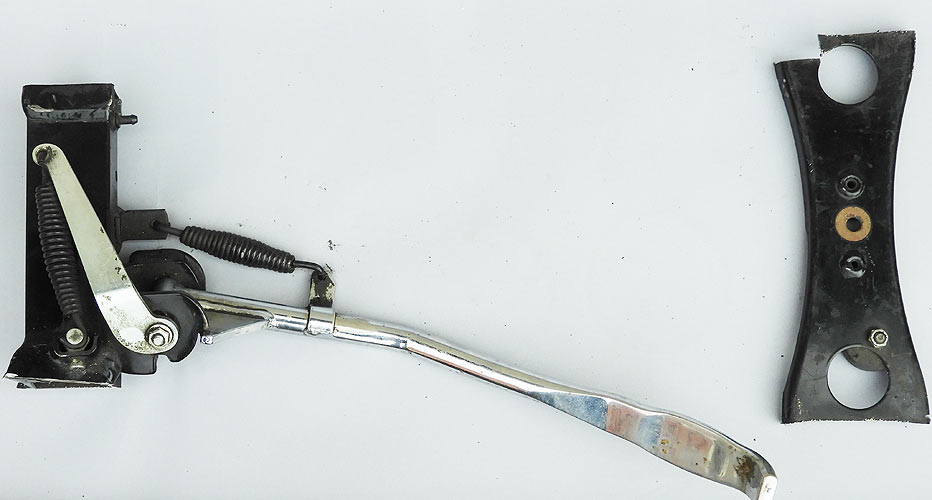


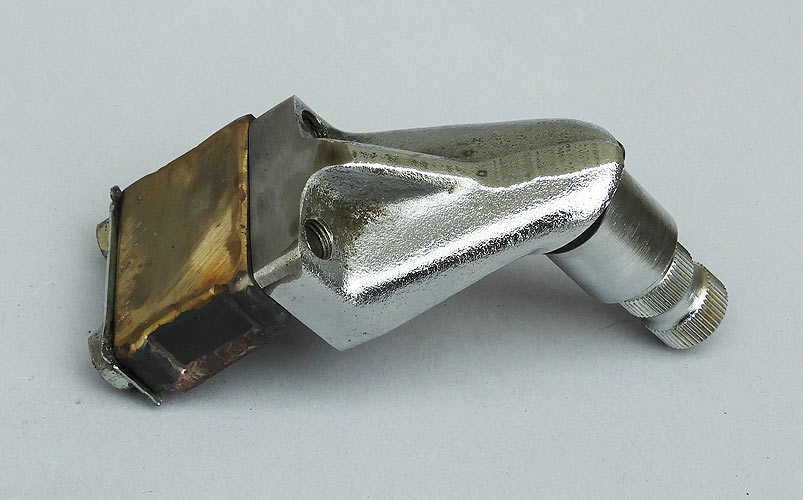
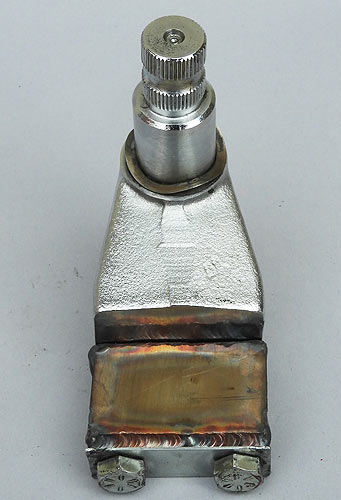
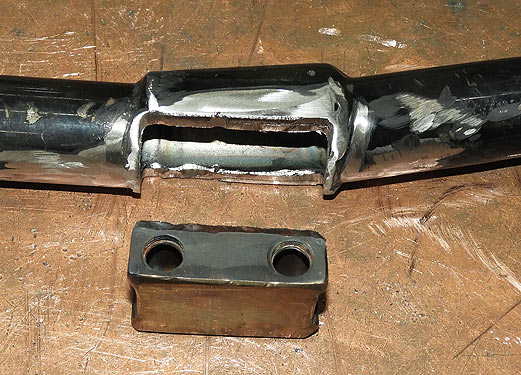
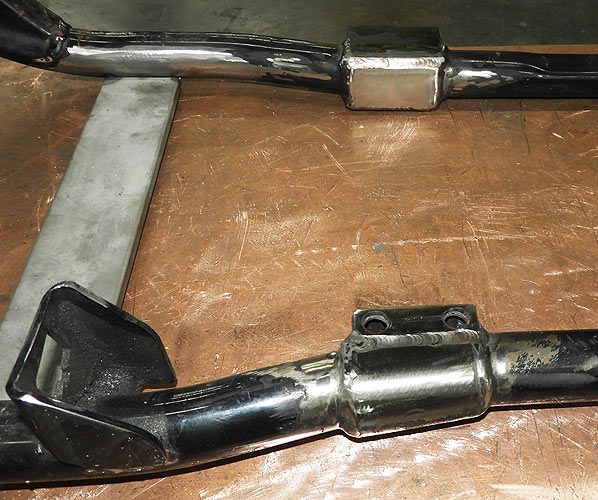
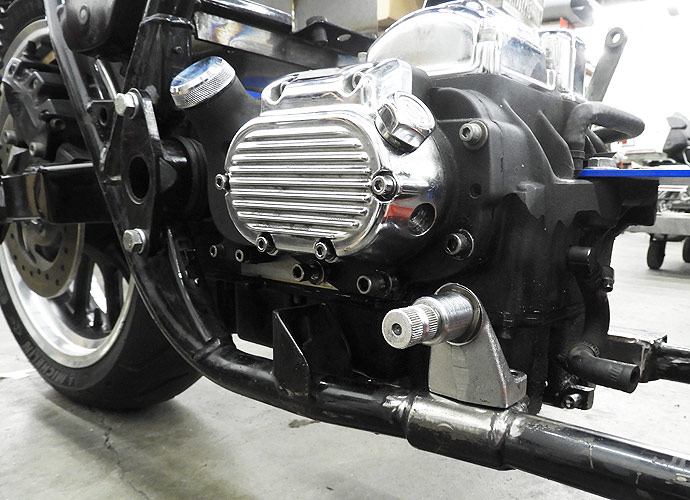
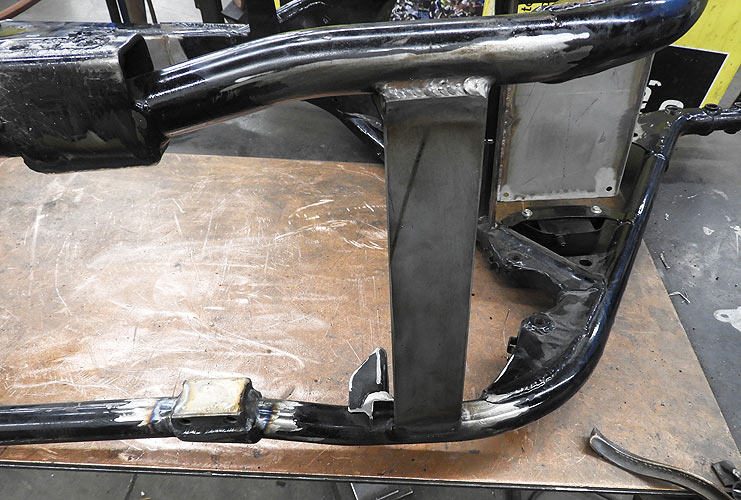
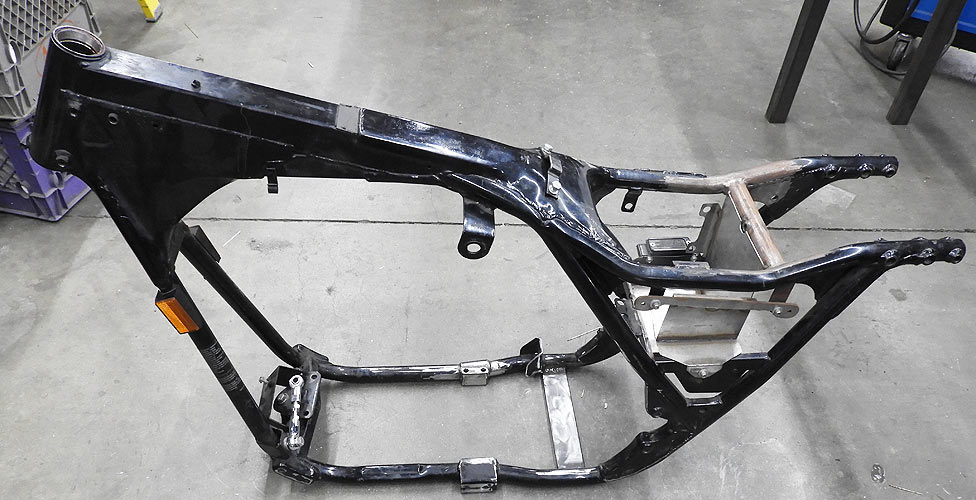
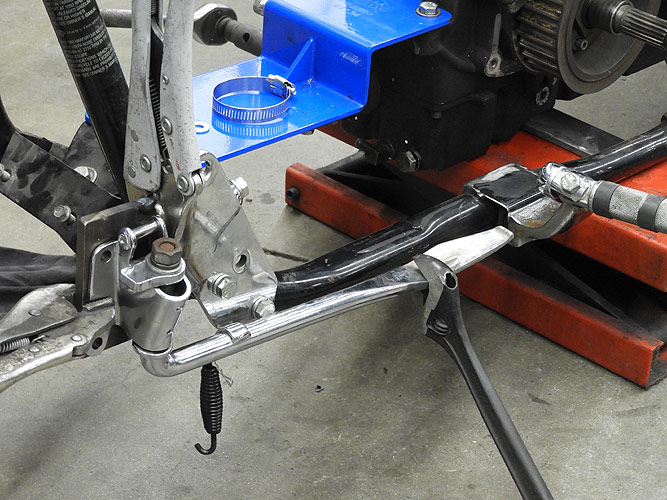
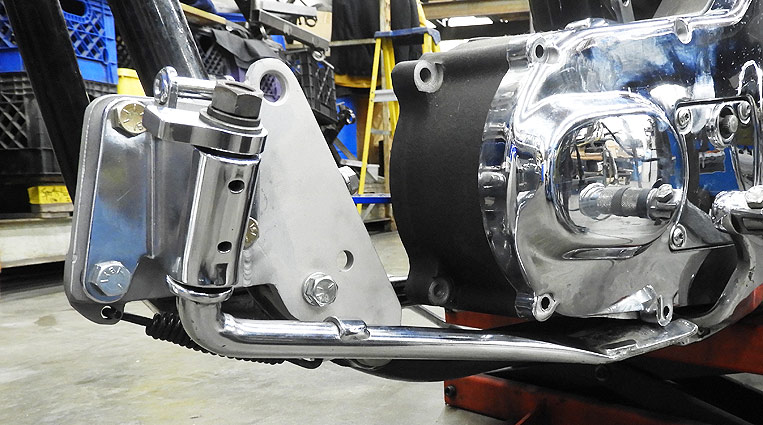
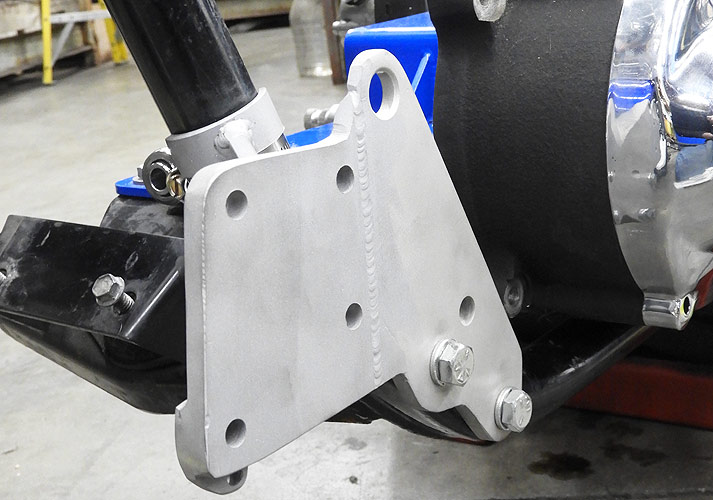
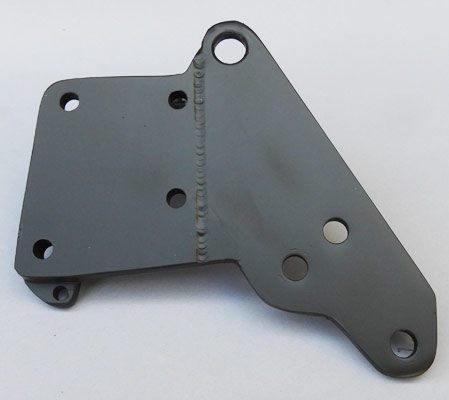

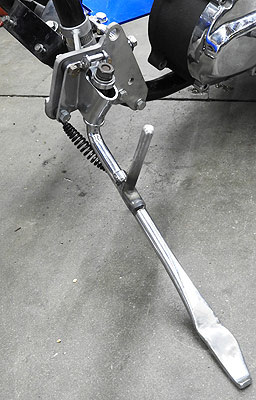
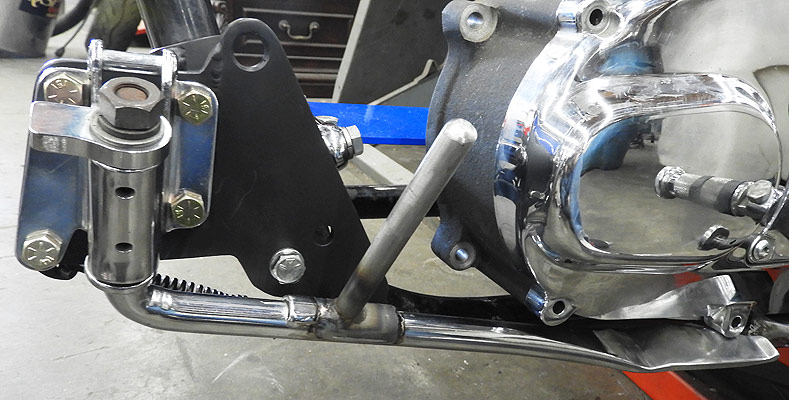
Steering Damper
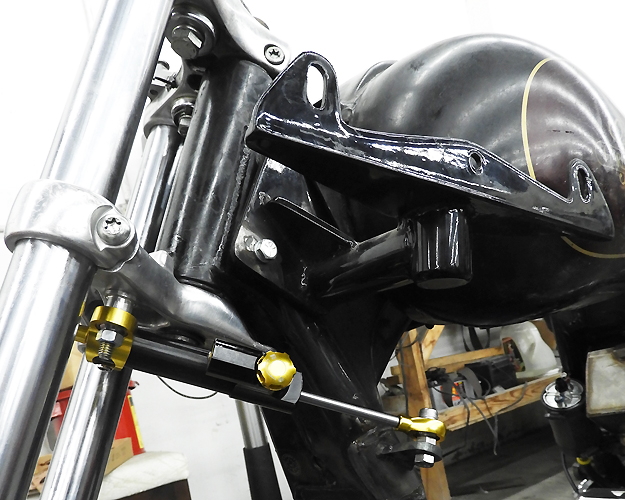
The FXR does not come with a steering
damper so we fabbed one up. We welded a saddle with a 1/4" steel
tab to the left down tube and machined in an offset anchor point into
the triple clamp
You don't want to be on a 28 degree rake,
300 Hp FXR, with 39mm Narrowglide forks, even with a fork brace,
without a steering damper.
At Bonneville steering dampers are
required and you
have to limit the fork stops to about 10-15 degrees left to right from
center to save your ass if
you get into a wobble. The damper cannot act as a stop. Having been in
a lock to lock horizon-altering wobble in 1985 at Bonneville verified
the need for limited lock on a race bike. We made a bolt in limiter for
the fxr.
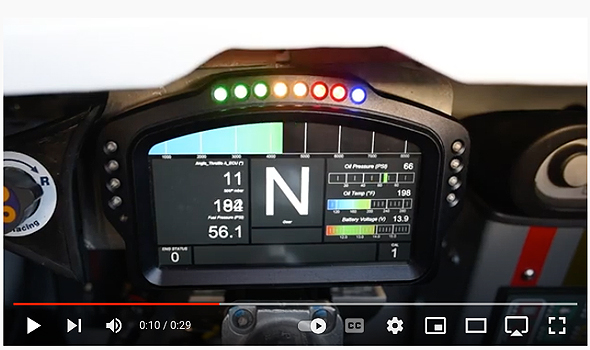
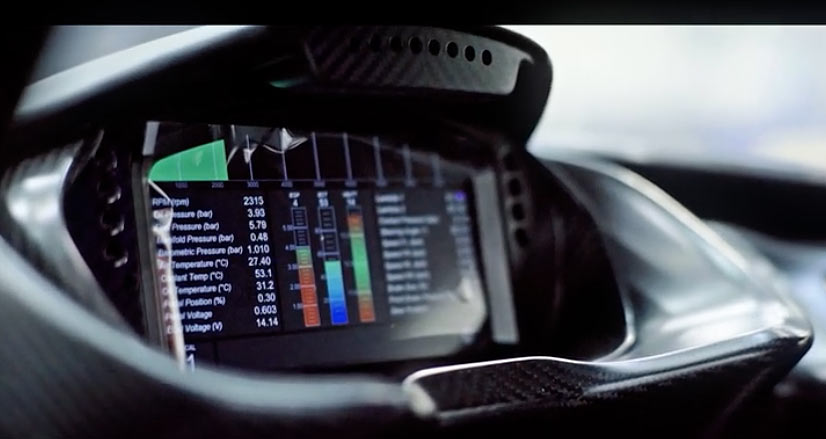
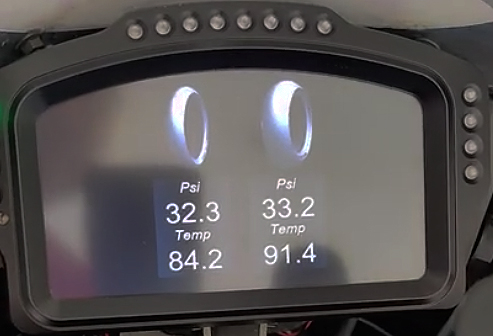

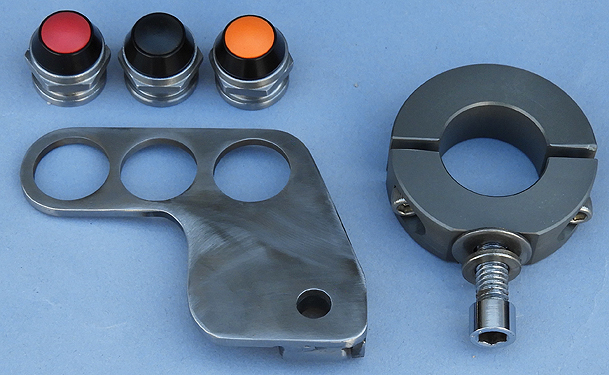

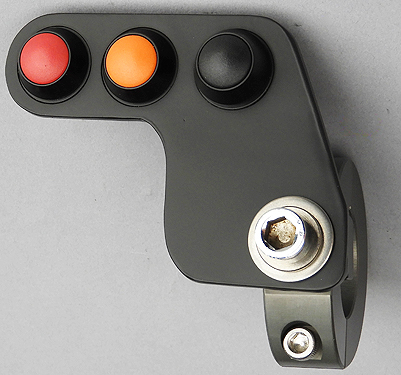

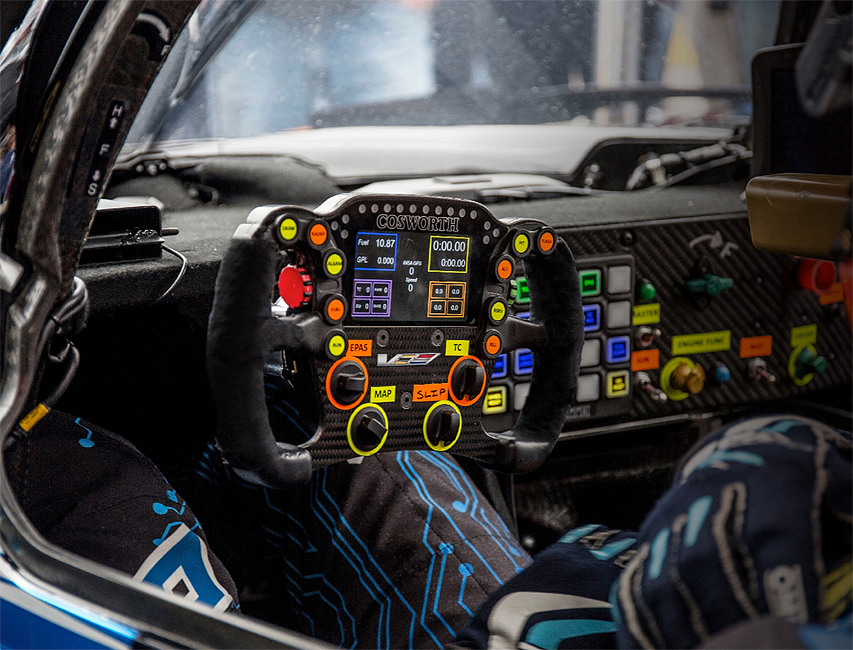
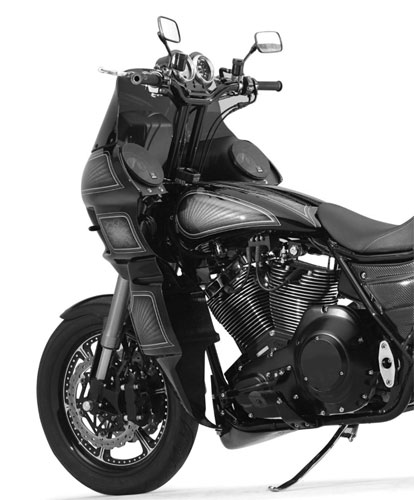
Our handlebars are not stuck up in the air
like the "Ape Hanger" style bars
everyone else has come up with when they try to make fairings for FXRs.
The bar arrangement pictured above comes from Big Bear Choppers. You
might
remember them from their previous Chopper ventures. They were going to
put Harley out of business. They folded shop...now they are making FXR
clones.
We are go fast racers, not cruisers,
and we don't need to show the world our armpits.
Strip Her... Show No Mercy
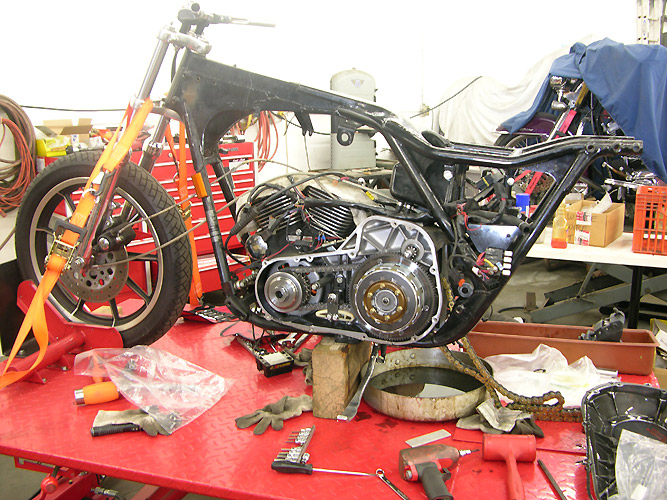
Take her down to ground zero. With ORCA
Turbo Power and Cosworth Pectel SQ6M
Electronics
all the stock stuff has to go. Pull out the CVO2 FXR 80" EVO and
donate
it to the Men In Black (Bryan Stock) , replacing a worn out RevTech
motor in Bryan's son's bike. Bryan thanked us. Nick did not.
We also donated a Twin Cam 88 with Branch
Heads, SE251 cams and an updated SE Oil System out of our
Turbo Road Glide (Road Toad) to
Bryan, as his own 95" Twin Cam in his chopped Dresser had passed the
100,000
mile mark and his Twin Cam was on it's last legs. Bryan upped the 88 to
95" and corrected a mistake we had made in the tensioner...It runs
"sweet" as Bryan said.
Since the FXR was all apart we took a set of STD heads we had planned to use on the 80" EVO down
to Branch O'Keefe so one of the Men in Black in Idaho could get a good breathing EVO. The
heads were later returned unsused after we split in 2017, so we sold them for what we had in them...$1,400.00.
Off to Dr John's Motorcycle Frame Straightening
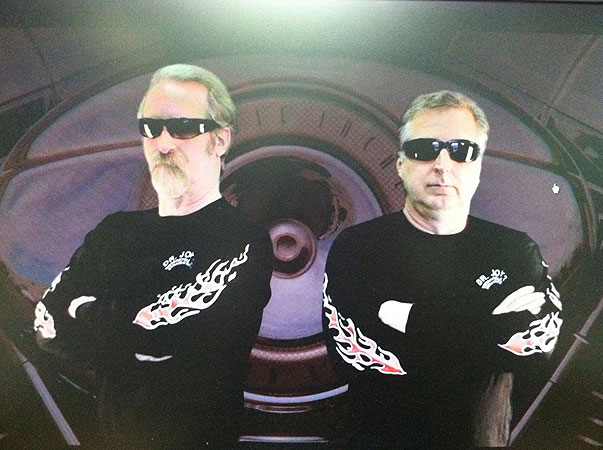
Next : Take the bare frame down to Doctor John's to have it checked for straightness...If you put 300 hp to the road the chassis better be straight. It wasn't.
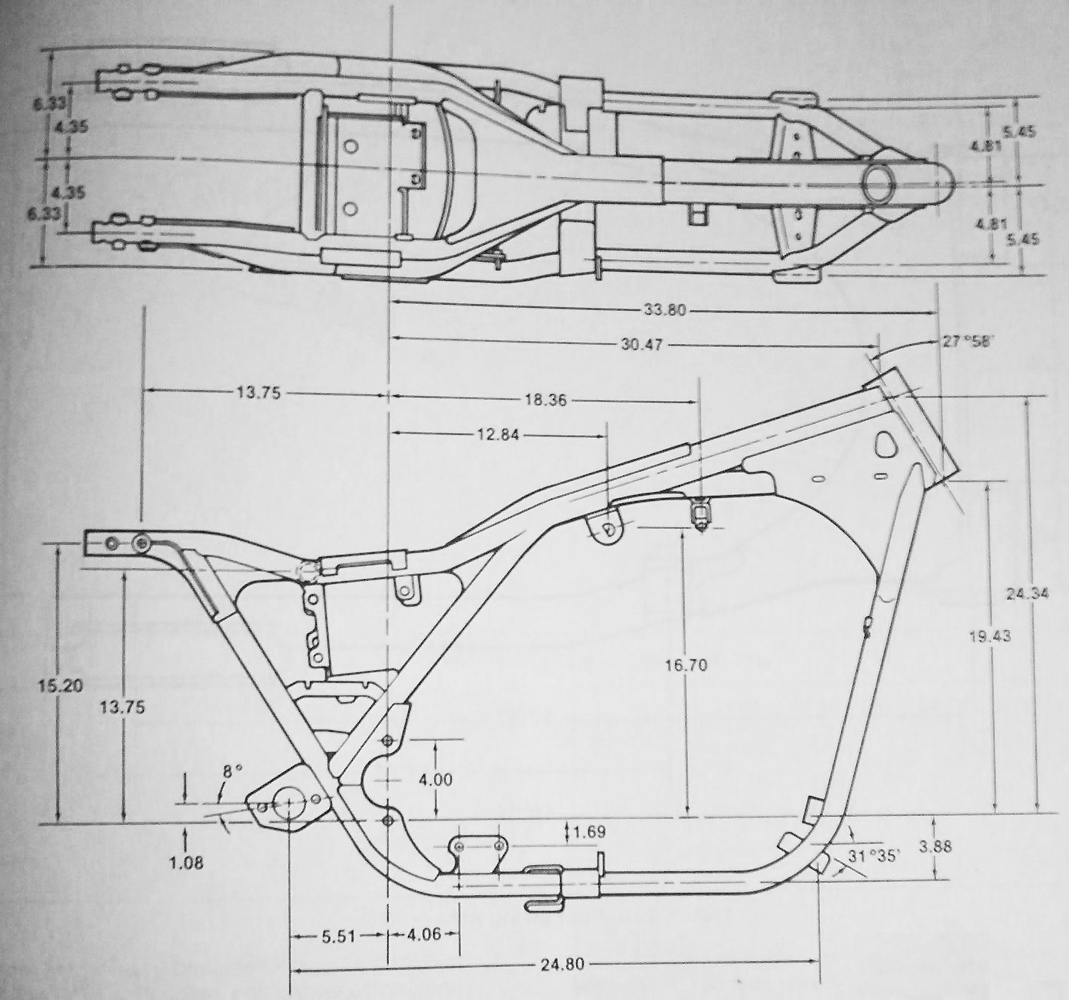
It all starts from known dimensions...FXR frame blueprint above. You have to have a frame table that has fixtures that will locate the centerline off of the neck and the swingarm pivot block locations. Rubber-mounted Harleys have special alignment procedures as the engine transmisson and swingarm do their own things.

Back from Doctor John's...$500.00 worth of
tweaking to get it perfect. He's the go to guy for chassis alignment
and
repairs. We used to make racing frames and
we build 200 mph bikes.
There was no way we were going to wind out the FXR with 25 lbs of boost
without having the
chassis checked. The frames are not necessarily straight when they come
from
the factory.
Bye Bye Stock Arm...FXR
Turbo Swingarm
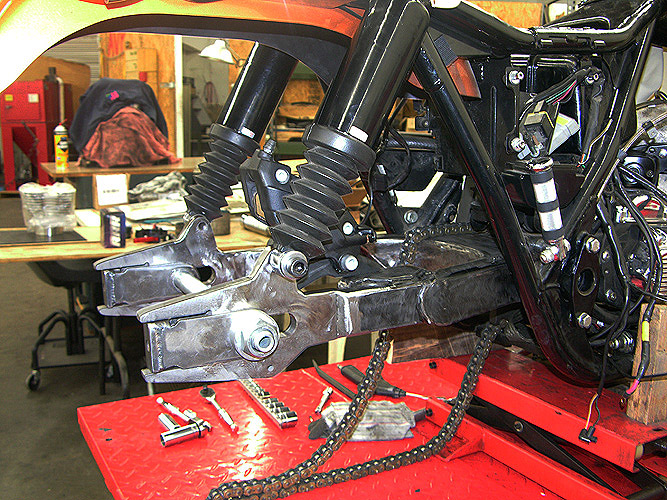
The stock FXR swingarm is way too weak for 300 HP. We do chain drive conversions for Dressers and FXRs so it wasn't a stretch cut up a 2008 FLT swingarm and put in higher shock eye mounts so we can use taller shocks with the tires we are running.. With all the changes we have 6.25" of ground clearance and a better rear swingarm angle.
Ground Clearance: OEM FXR's had anywhere
from 5.25" to 6.12" of ground clearance as Harley marketing kept
pushing the seat height lower trying to sell more bikes as "Cruisers"
and not "Go fast through the corner types", chasing Japanese
sport bikes. We'll stay with 6.5" for the initial testing. 2" longer forks inpack sidestand issues.
Our Road Racing Monoshocks
had seat heights of 30", raised folding spring-loaded footpegs, and
lean angles of 50 degrees. Our FXR ORCA has a seat height of 29.5".
Stock FXR's have around 30 degrees of lean angle
before you tuck your toes up and start scraping things.
Pictured above is our FXR Turbo Orca swingarm (modified 2008 Dresser) with 1" higher shock mounts. It has 2" of adjustment for the chain drive and uses a 25mm late model axle for a 17" Sporster rear wheel. Stronger than oem FXR swingarm, it has been modified to use our 5/8" 1999 FXR CVO2 transmission pivot shaft. A late model 4 piston CVO Dresser caliper provides the rear stopping power.
We are using a 1998 Dresser Oilbag 5 speed
transmission with Jims Fat5 gears.
We raised the shock mounts to use with 13.5" shocks to get 6.5" of ground clearance with the smaller diameter 150 x 60-17 rear tire and the 17" front tire. We get an improved swingarm angle of 6 degrees downward as an additional benefit.
FXR Swingarm with Stock Shock Locations
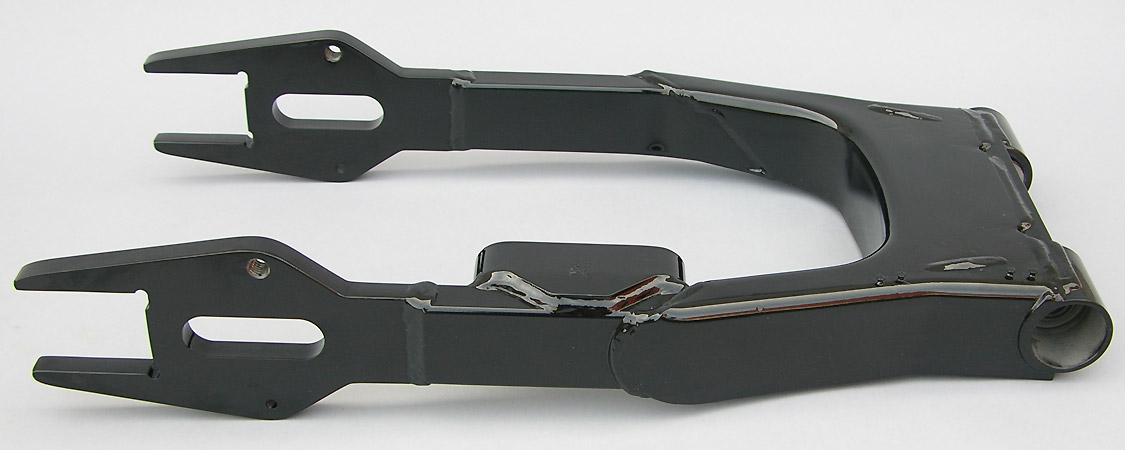
FXRs have different pivot to axle lengths
as well as shock locations compared to Dressers. This is our FXR Swingarm with the stock
shock location for an FXR.
FXR's had crappy rear brakes and
the original caliper mount would not work anyway with the new, larger,
25mm rear axle. Simply use a late model 4 piston FLT rear caliper.
We sell these to FXR owners who put in 111/124" motors which still allows them to retain their 5/8" pivot shaft and use the late model spherical bearings.
Switch to late model caliper and disc, typically 2008 and later with 11.8" disc.
FXR Twin Cam (pre 2009) 5/8" Shaft Spherical Bearing...No Plastic B.S.
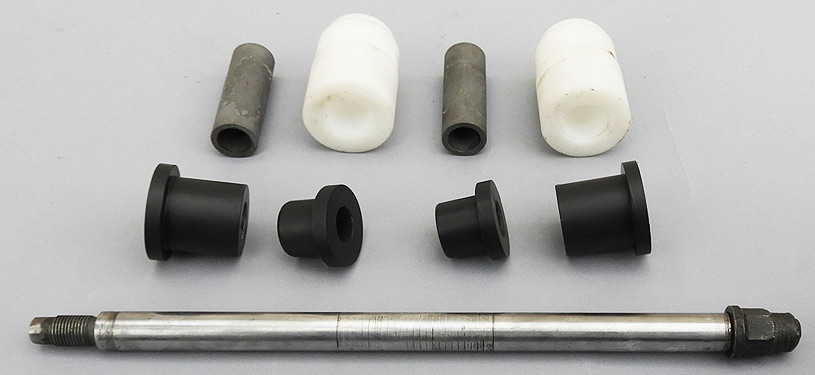
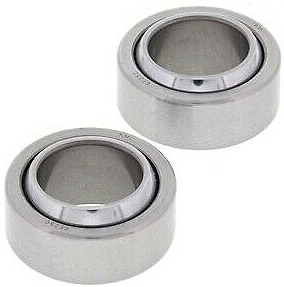
In the picture above, at
the top, are some really questionable aftermarket Delrin spacers that are sold with
tubular inserts that, with the help of some grease/paste, are supposted
to act as bearings and pivot in the Delrin. This is by no means a
bearing in any sense of the word. It is patently stupid...crude with
stiction. Those go in the trash.
At RB Racing we machine up
some spacers, black items pictured above, that allow you to use the OEM
9208 Spherical Bearing...that is actually a real bearing...and allows
you to retain your one or two-piece 5/8" axle. We install these in the
pre 2009 Twin Cam swingarms we modify for 2" adjustment, high
horsepower, FXRs.
If you choose to do this be
aware you must change your rear wheel, axle, and brake assembly for the
25mm rear axle and later model brake calipers. Do not attempt to
drill or ream your
transmission case for the late 3/4" axle. There may be more stronger Delkron FXR
cases with 5/8" and 3/4"pivots...even though Delkron went away long ago.
We can supply the complete swingarm ready to fit your FXR or earlier EVO Dressers. FXR and Dresser swingarms have different shock locations.
FXR Turbo Battery....Time to Cut her up.
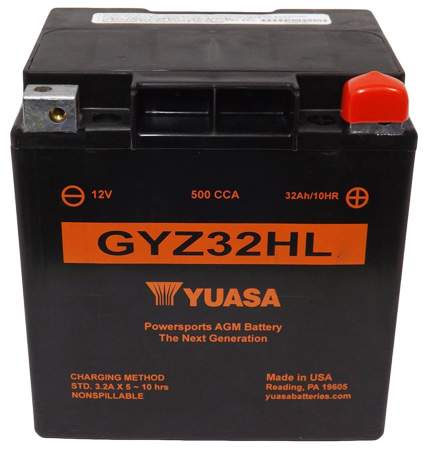
We checked around for the best
battery..i.e. the highest cranking capacity for our 126
Road Toad and 139 Cubic
Inch Bullett motors and found that Absorbent Glass Mat (AGM) was our
best
option, and that the only battery more powerful than the OEM Harley
Batteries (DEKA) that we had been using was this Yuasa Battery with 500
CCA. GYZ32HL.
We tested a Lithium Iron Phosphate battery in a smaller 80 Inch Evo
motor and it worked very well for a year, always starting the efi
instantly and maintaining a 13.2VDC charge...When we tried the same 24
cell
battery on the Bullett it cranked very quickly but gave up quickly.
In talking to the battery engineers at what we consider to be the best
Lithium Battery manufacturer, earthX
, they told us the following:
"Based on your engine size (139CID), which as a V-twin engine requires
much more cranking amps than a V-8 truck, we do have a battery that has
1,000 cranking amps which should keep the voltage from dropping and
affecting your EFI. The model number is ETX48E and weighs only 7.7
pounds. . The bad news is this battery costs $699.00 . Lithium
batteries are very different than a lead acid battery in that if you
pull too much cranking amps from the battery in order to start the
bike, you will damage the cells. They are not as robust as an AGM
battery and for your type of application, it is very hard on any
battery but I would think an AGM would fare better. This probably
isn’t what you wanted to hear but lithium batteries are fantastic in
the right application but your bike's demands are at the upper edge of
use."
Rare to find honesty these days. AGM it is.
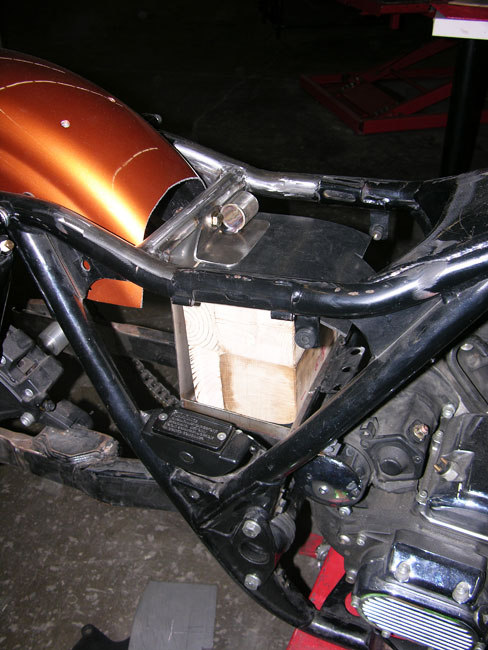
Make
a fake wood battery with the new Yuasa GYZ32HL dimensions and
cut up some stainless
16 gauge 304 stainless steel sheet. The seat frame brace has to be cut out
and moved back and that means the fender has to be modified also.
Fabricate a new battery hold-down and isolate the "battery" on all
sides with rubber. A circular stop is added for the bump stop under the
oem seat pan.
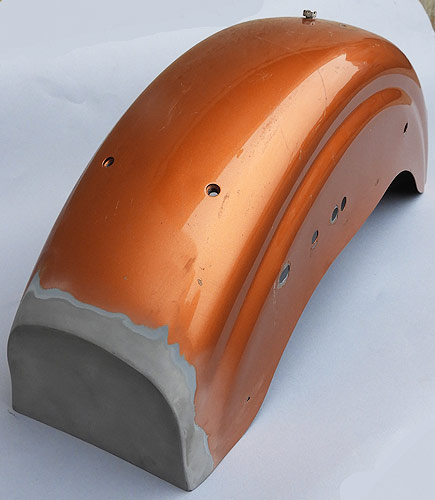
Sheet metal the cut out in the rear fender to
allow clearance for the bigger AGM battery.
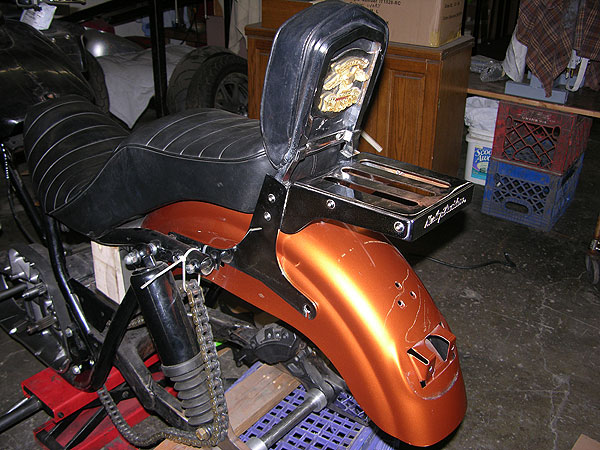
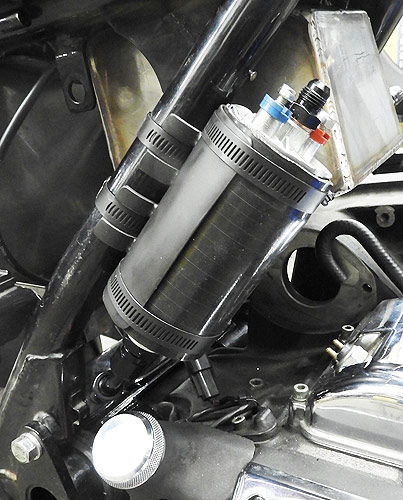
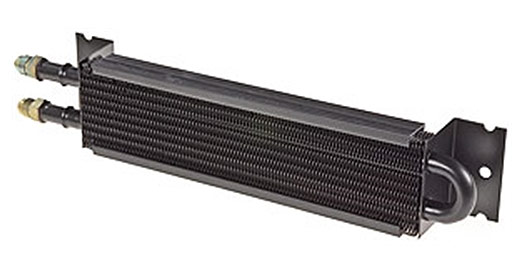
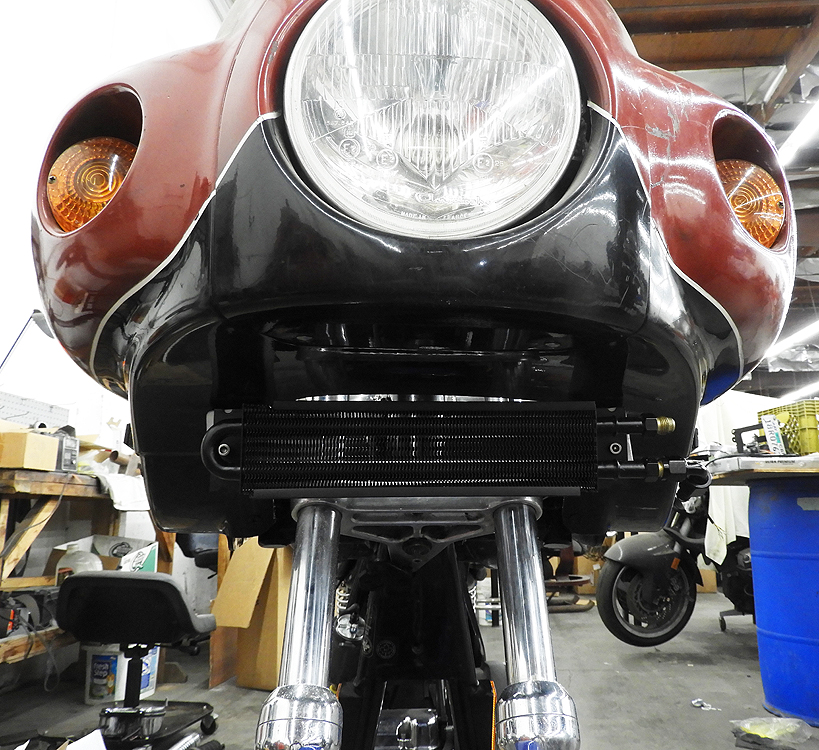
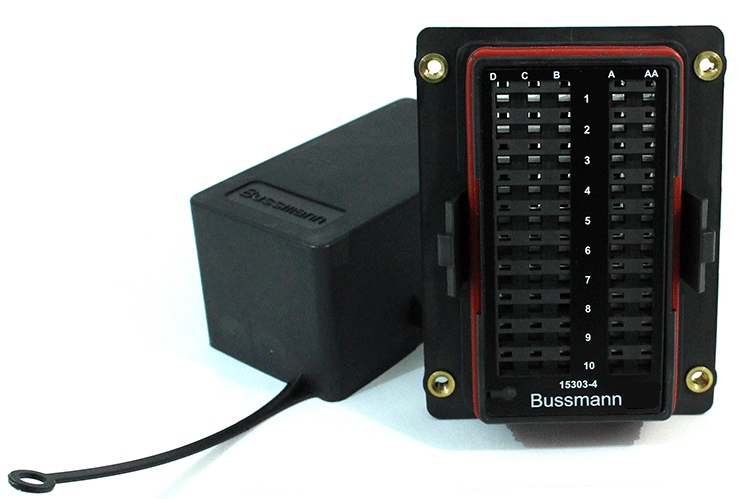

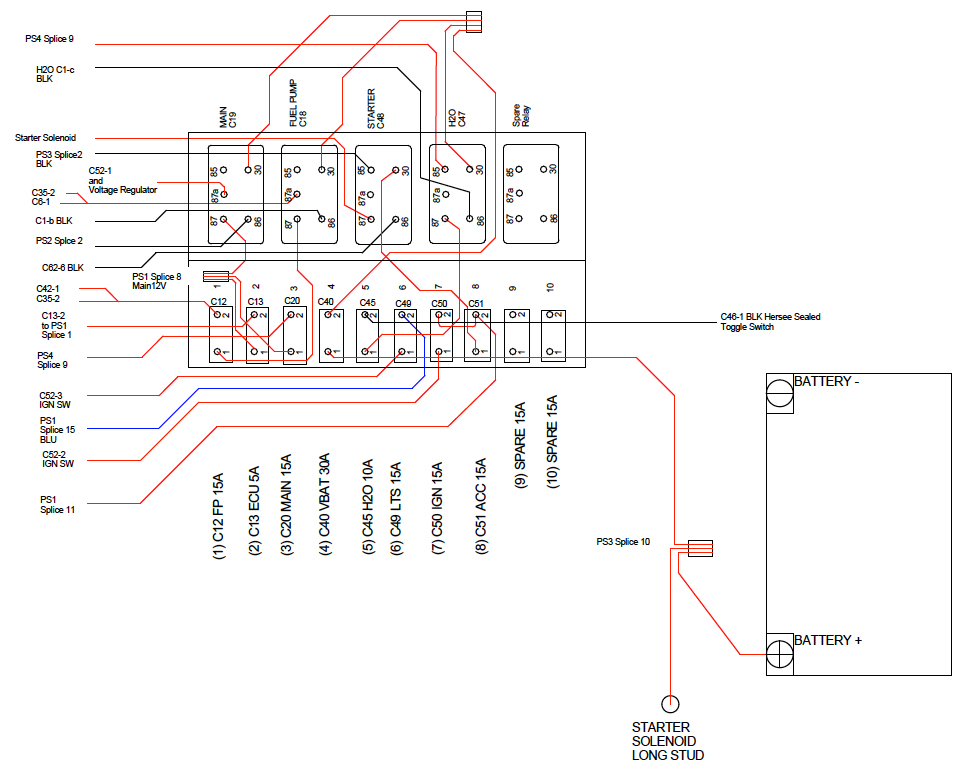
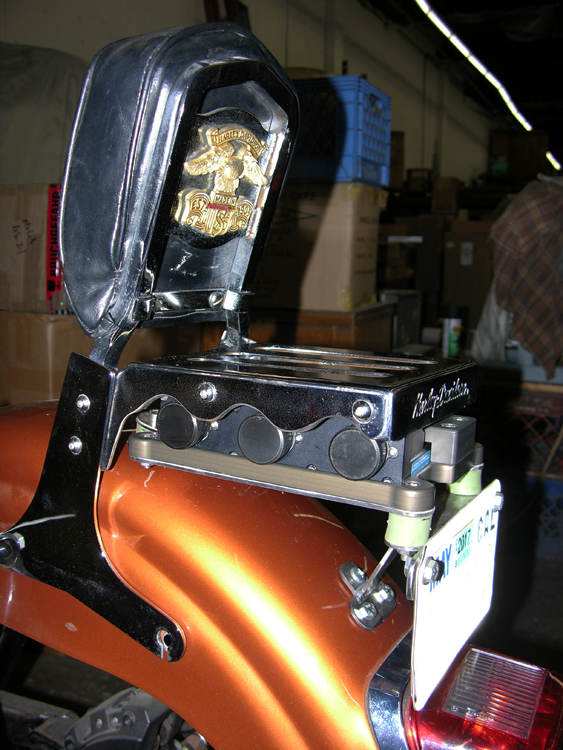

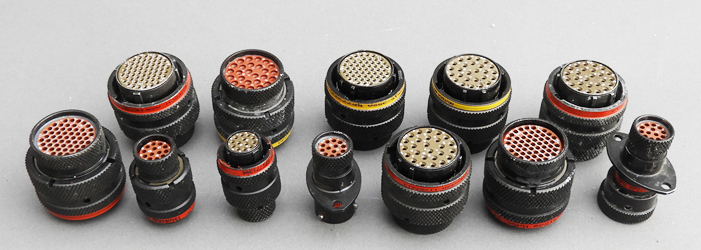
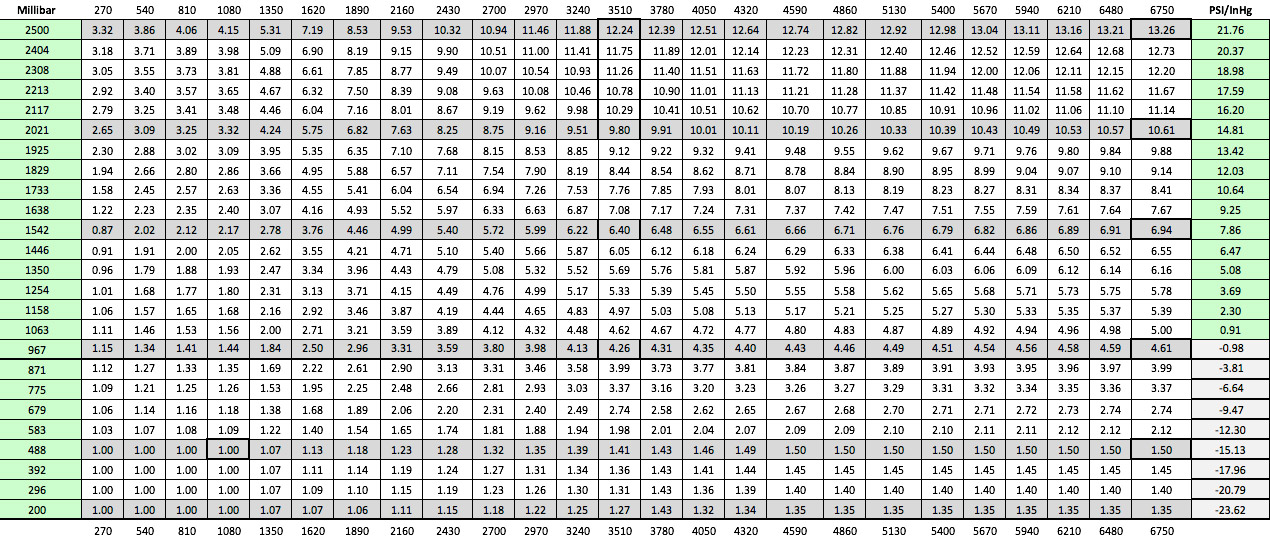
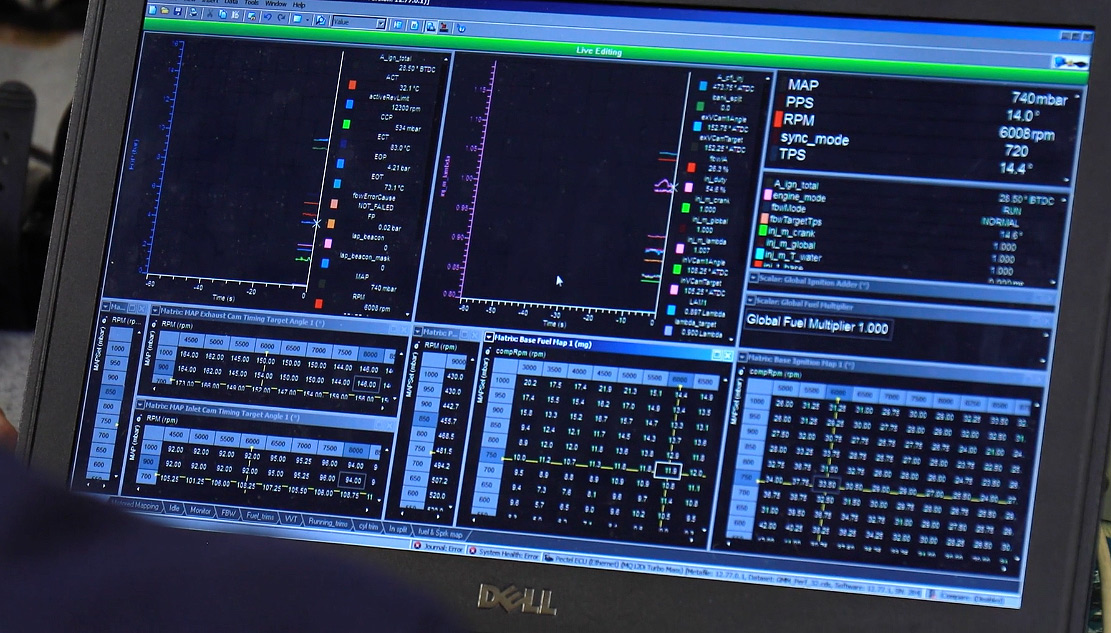
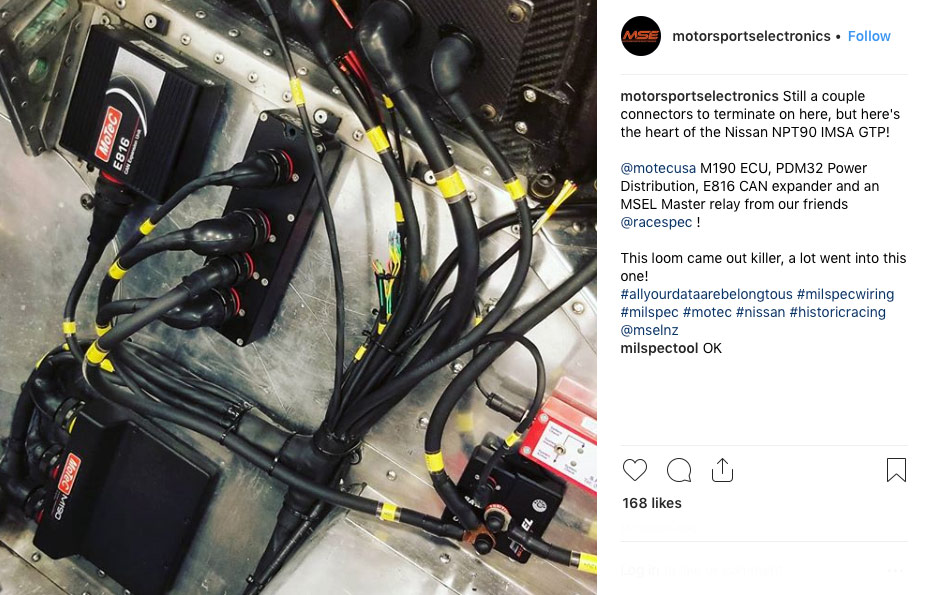
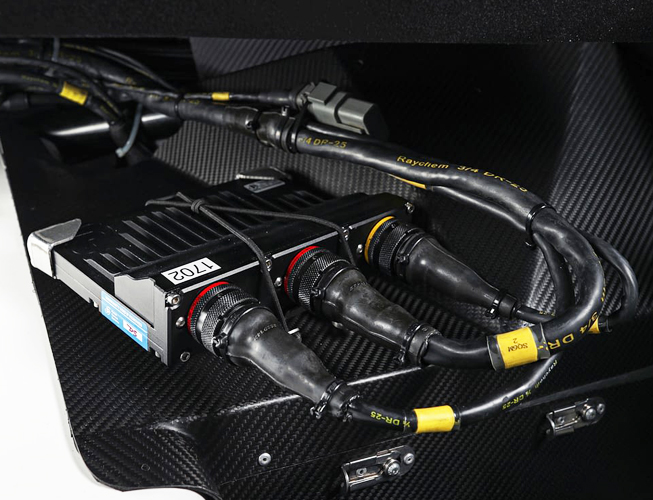
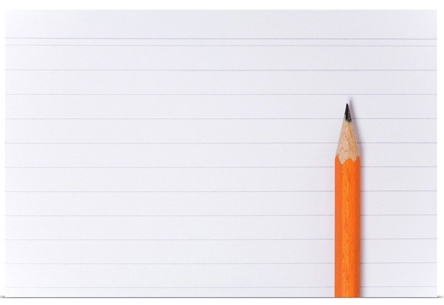
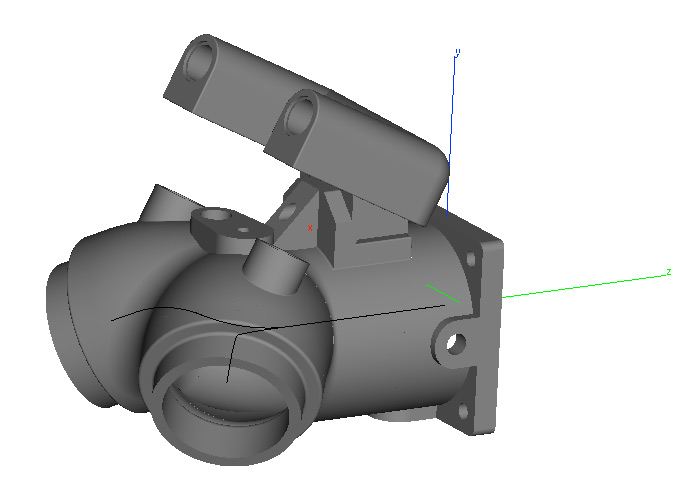
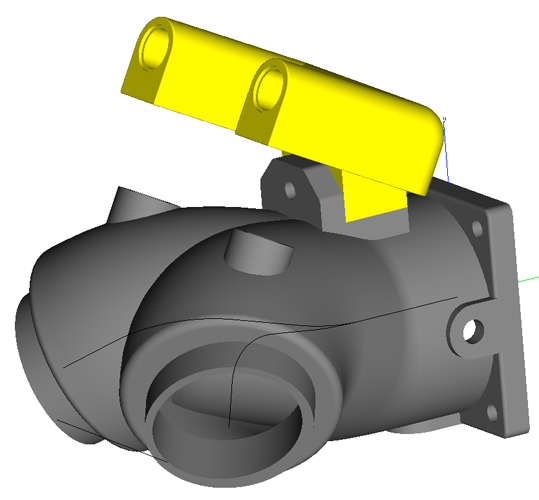
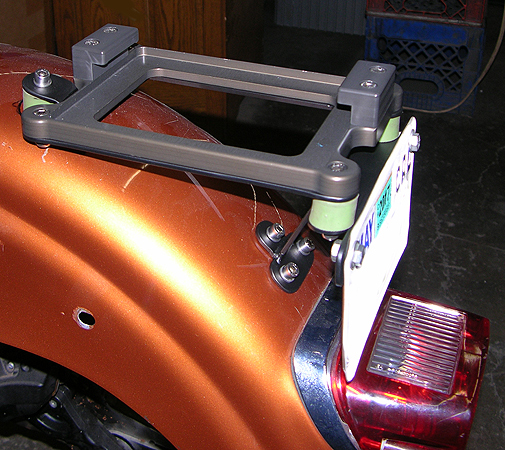
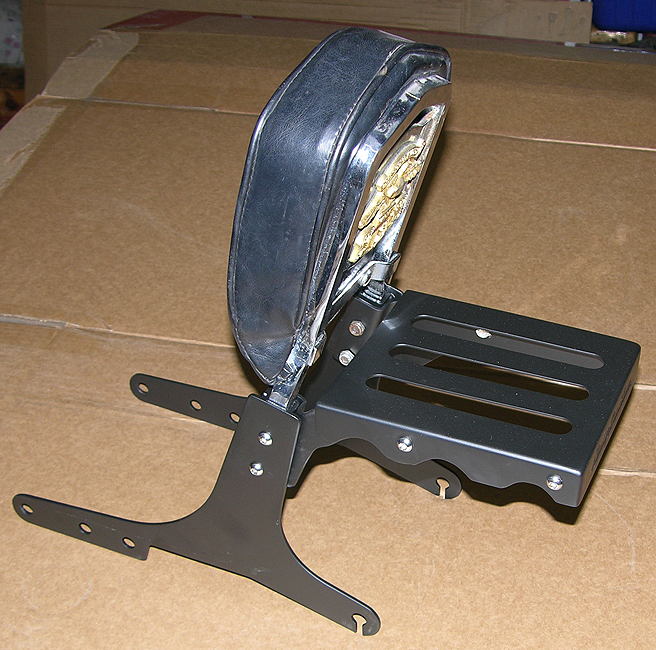
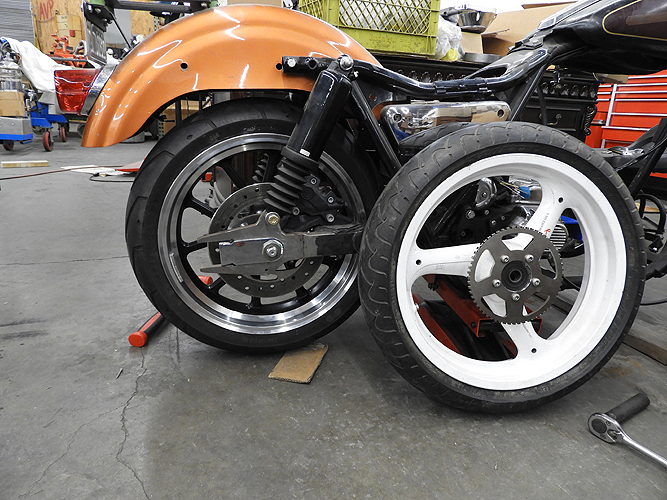
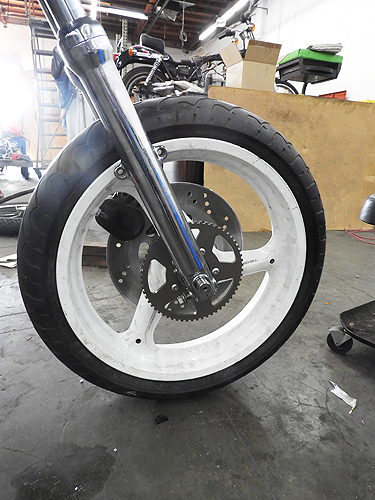
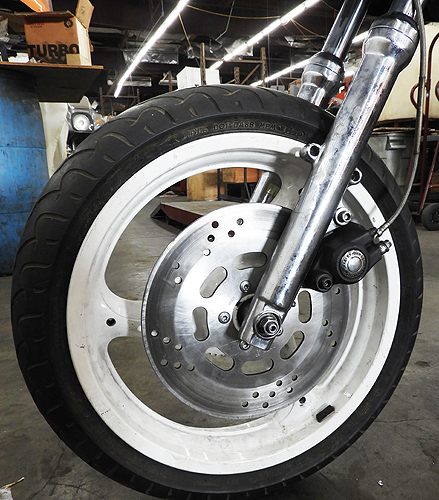
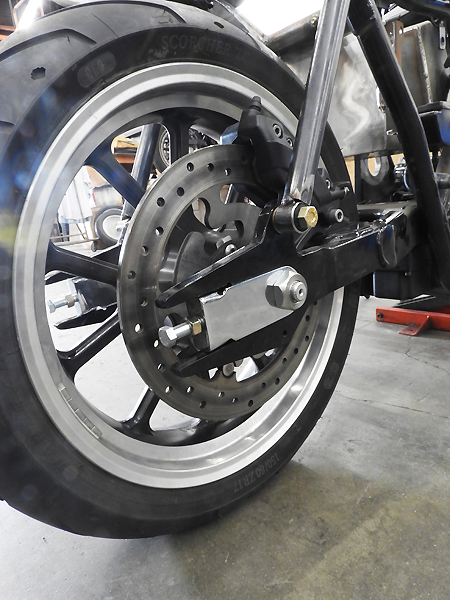
Bosch
Motorsport Ignition Coils
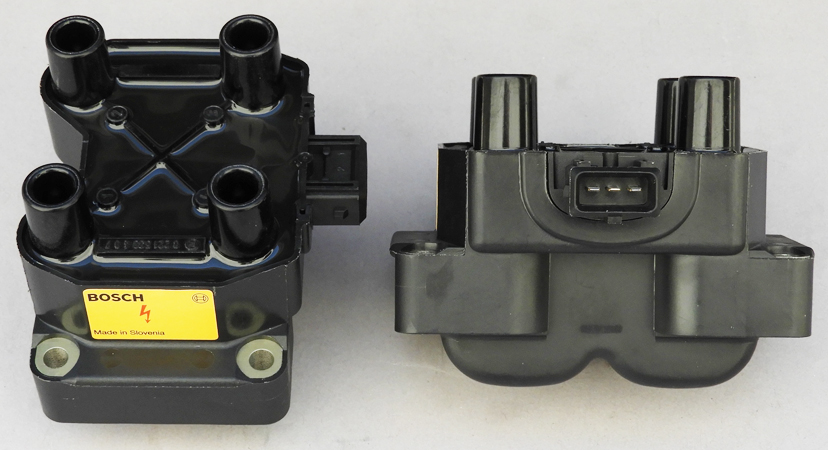
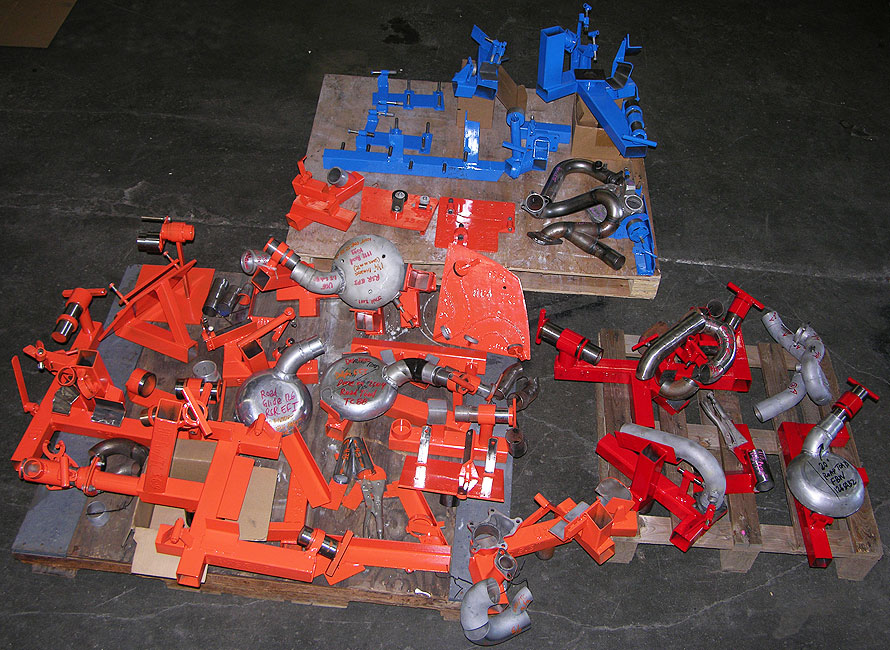

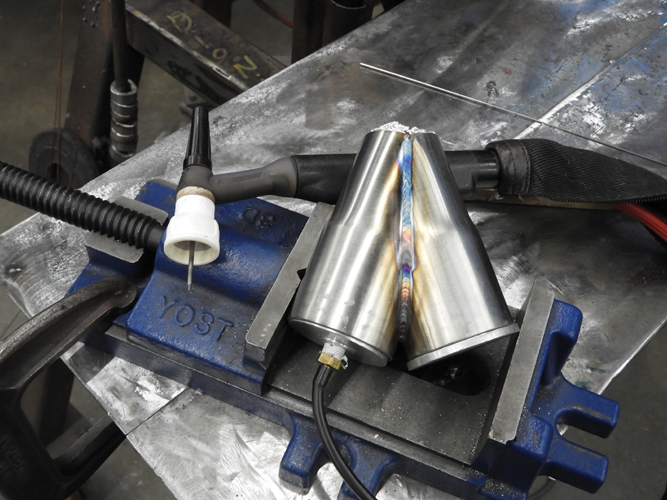


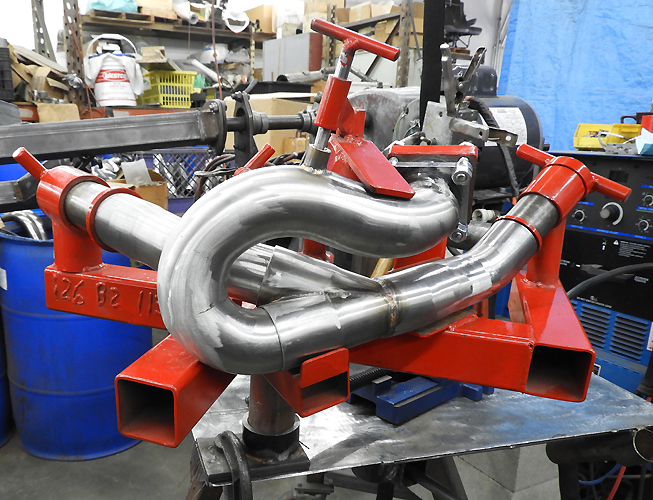
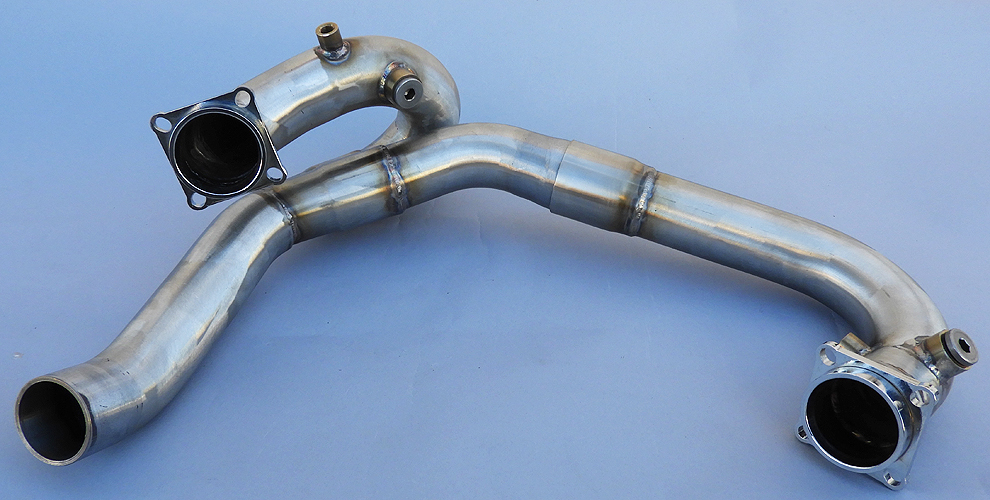

FXR Turbo Compressor Discharge Valve
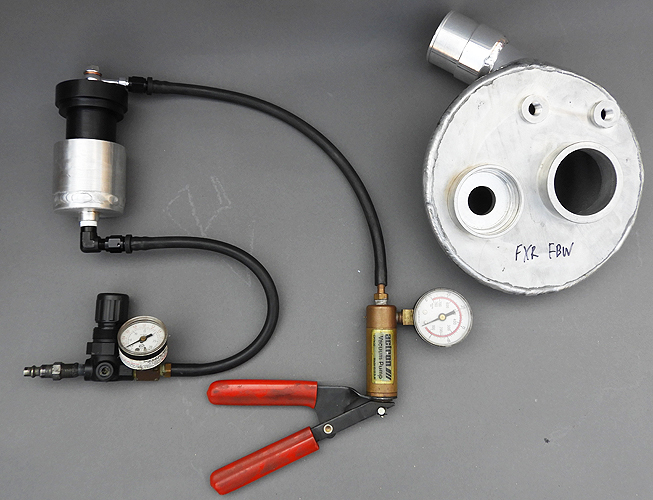
On shifts, or closing the throttle under boost, this valve vents the pressure to prevent compressor surge wherein the boost goes backward through the compressor. Here we are testing it for function with boost and vacuum signals.
Compressor
Discharge Valve sockets into rear of the plenum. 60mm Bosch Fly By Wire
Throttle entry and two ports for the Phase-Antiphase Wastegate Pectel
SQ6M boost control...Boost by gear, programmed throttle openings, and
eight levels of traction control.
Stay Tuned..It's going to get complicated.
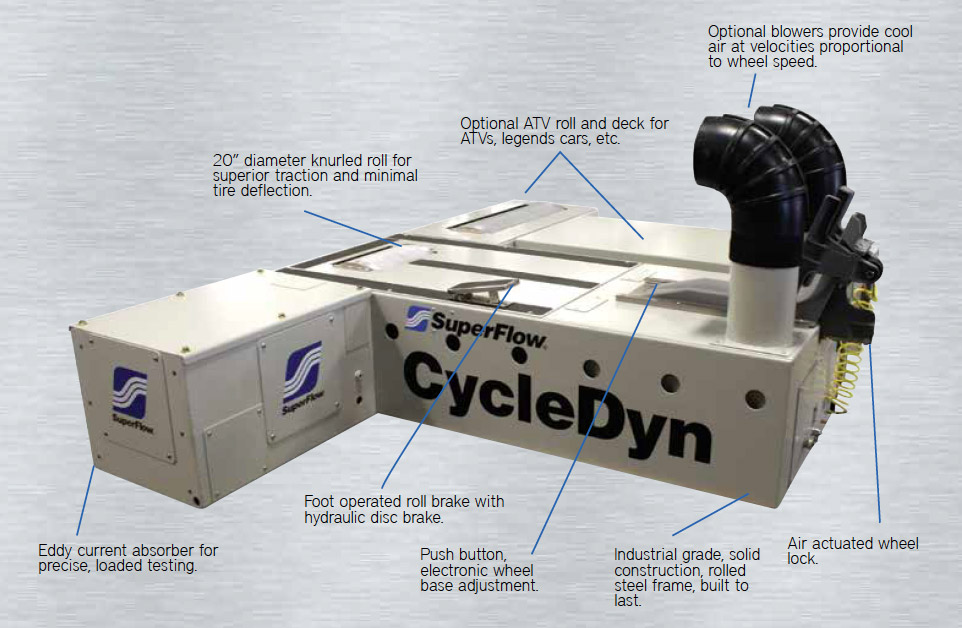
With over 8800 programming categories in the Cosworth Pectel SQ6M and a 360HP turbocharger, like we use on our 126 SAB2 Road Toad, we choose to use the Superflow CycleDyn for our development. Safer than running from the cops...not that we used to. Freeway cameras, helicopters, people on cell phones...you get the idea. With the Bonneville Bullett you can't do road testing...It's the Dyno and the Salt Flats.
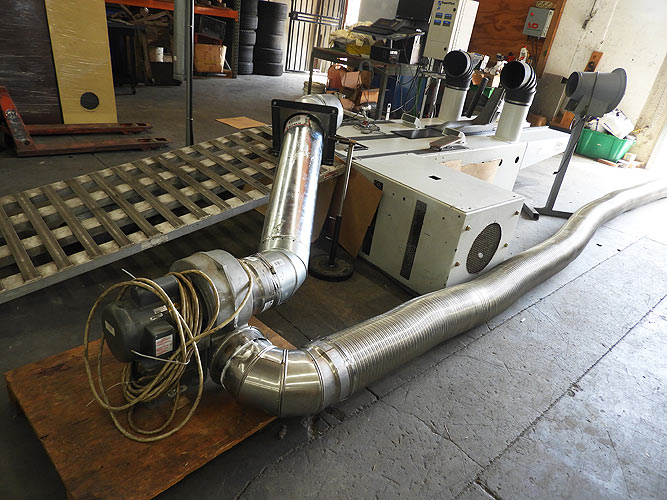
Carbon Monoxide is a killer. It has to be positively scavenged and discharged away from the building. All exhaust fumes must be vented so the operator and the engine cannot re-breathe spent gases. Carbon Monoxide is odorless and flat-ass dangerous. We have a CO meter on the dyno operators console.
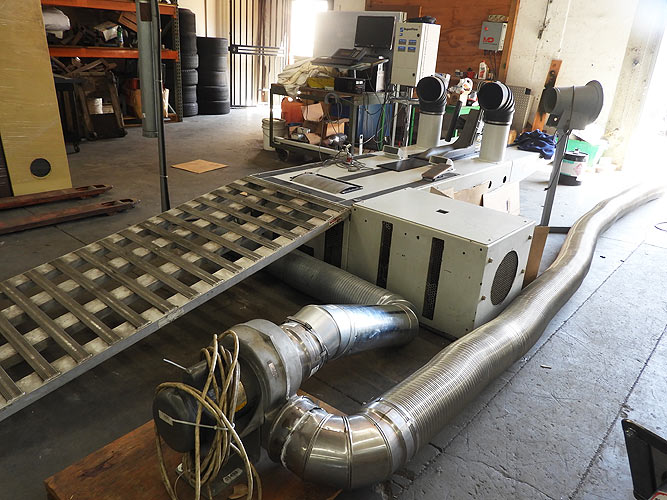
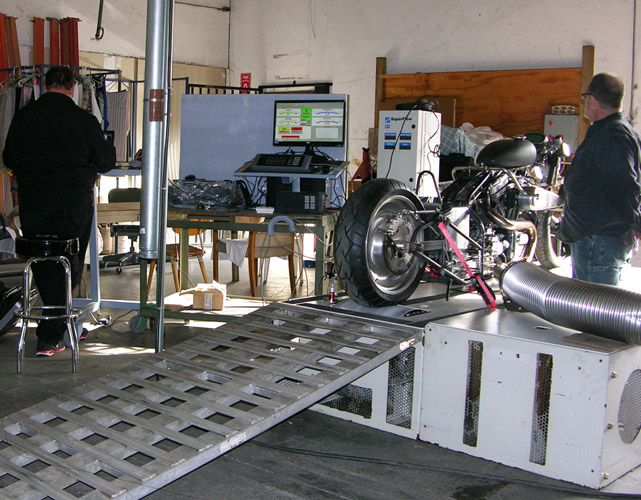
The
FXR can be ridden to perfect things in the real world and the Superflow
CycleDyn is about as close to the real world loads and speeds (200mph)
as you are going to get without leaving the shop...Like Tom Bookhamer's
120CID Harley Bonneville bike being tuned by Shane Tecklenburg on our
CycleDyn. Shane is the top Zen Master Motec Guru. Tom drove out to RB
Racing, all
the way from Florida, to get his M130 Motec tweaked. 8" stainess
exhaust extraction with an 1100CFM fan. No carbon monoxide in the shop.
We'll do initial testing on the FXR on the Superflow CycleDyn...A long way to yet go before we get to that point.
These days there are cameras everywhere on the freeways. There are automatic license plate readers. People call the cops and take pix on their cell phones...and the Highway Patrol and local cops seem to have lost their sense of humor. It's dynos and eyes in the back of your helmet these days..or go way out in the middle of nowhere.
"Hold on, hold on, my brother
My sister, hold on tight
I finally got my orders
I'll be marching through the morning
Marching through the night
Moving cross the borders
Of my secret life..."
Leonard Cohen